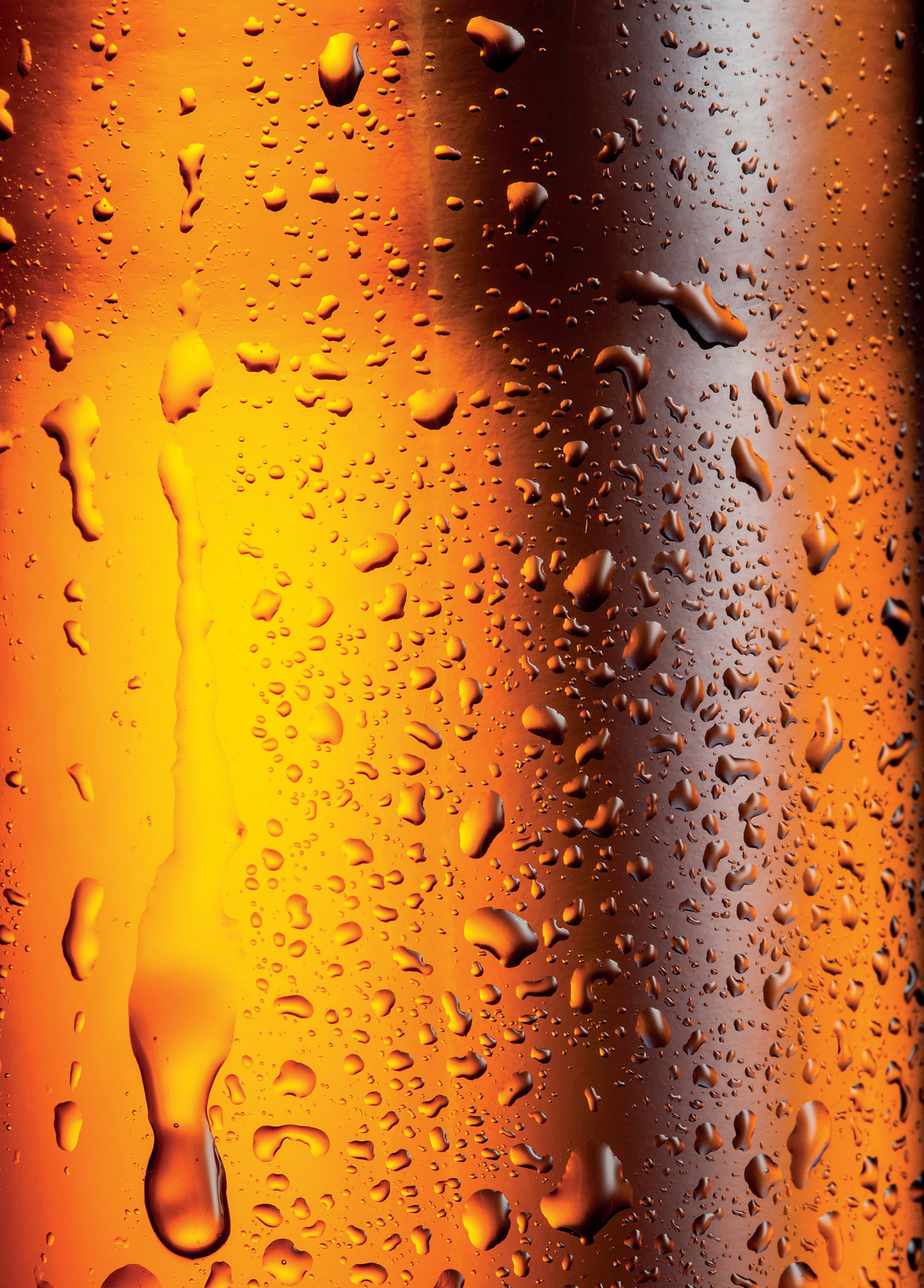


















































































The Brewers of Europe Rue Caroly 23 - 25 1050 Brussels Belgium Phone: +32 2 551 18 10 info@brewersofeurope.org
OUR WEBSITES
www.brewup.eu www.brewersforum.eu www.brewersofeurope.eu www.brewing4.eu www.reconnect.beer www.brewingtogether.eu
brewup.eu | Brewersforum | TheBrewersofEurope brewup | the-brewers-of-europe-forum | the-brewers-of-europe @brewup_eu | @ForumBoe | @brewersofeurope @brewupeu | @brewersforum
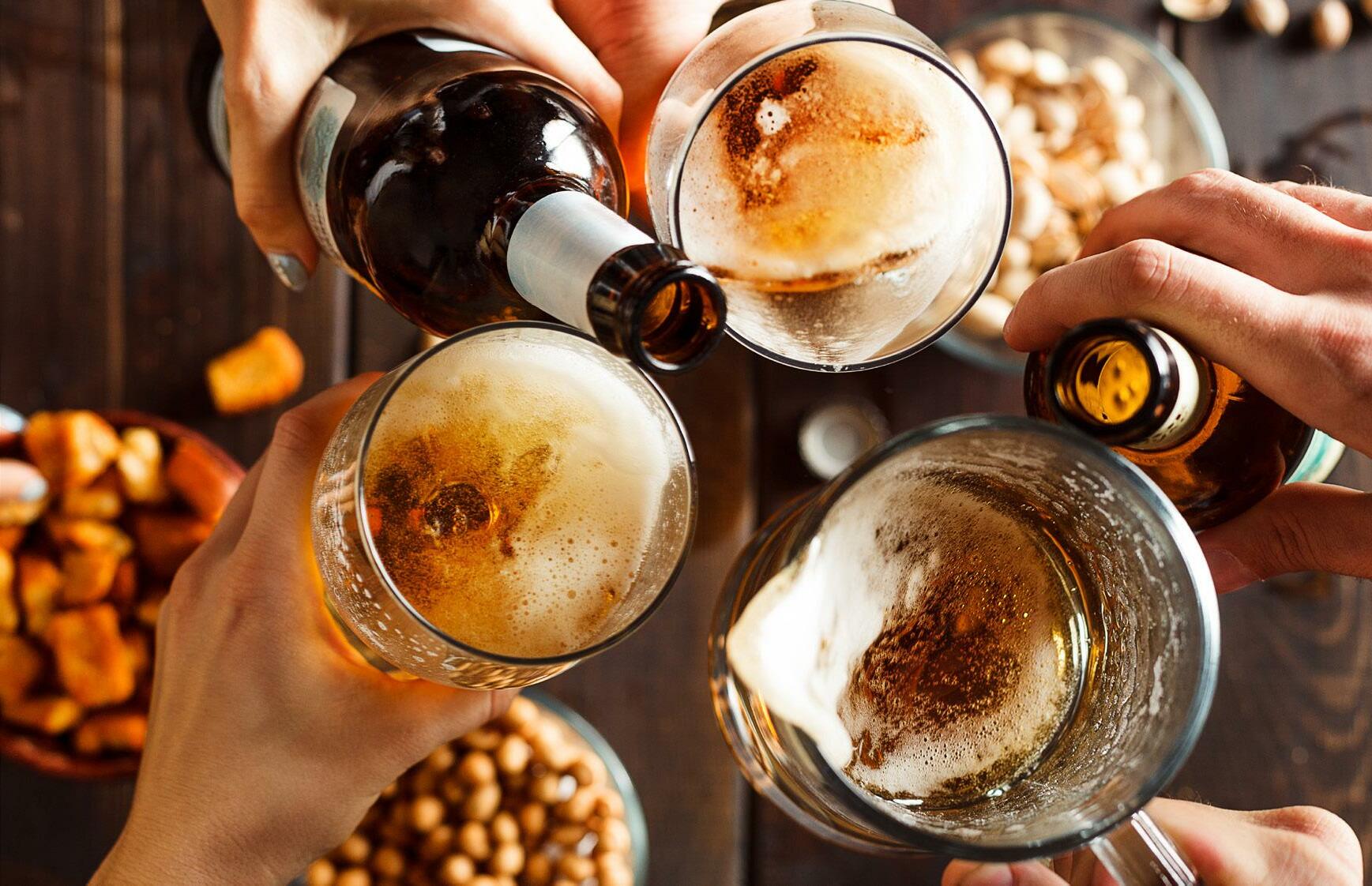 EDITOR Mathieu Schneider
EDITOR Mathieu Schneider
HARVEST
Cheers to a brighter future for the European food and drink sector 22 CO2 Shortage in the Brewing Sector 24
An appetizer to the Brewers Forum 2023 30
A look back at the Brewers Forum & 38th EBC Congress in Madrid! 32
SUSTAINABILITY . . . . . . . . . . . . . . . . . . . . . . . . . . . . . . . . . . . . . . . . . . . . . . . . . . . . . . . . . . . . 37
Diversity, innovation and collaboration – three key ingredients for sustainable brewing 37 Gulpener about sustainability and how breweries can contribute to a greener and better world 40
Kamenitza works for the good of the people and the planet 44
Nederland / The Netherland - Statiegeld op blik van start vanaf 2023 /
Deposit on beverage cans comes into effect in 2023 46
Sustainability activities in Romania 48
OKTOBERFESTBIER OFFICIALLY BECOMES A PROTECTED GEOGRAPHICAL INDICATION . . . . . . . 52
REVIEW: THE BOTANY OF BEER: AN ILLUSTRATED
THAN
Deteriorating sentiment among Polish brewers 56
Pogorszenie nastrojów wśród polskich browarników 56
In October Sofia became the European capital of the beer industry 58
Croatia – Zagrebačka pivovara is celebrating its 130th birthday this year 59
Croatia – More than 20 tons of waste from illegal landfills were cleared by Zagrebačka pivovara 60
Croatia – Raising awareness on responsible alcohol consumption since 2008 60
Czech Republic - Pivovary Staropramen jsou nedílnou součástí svého okolí 62
Czech Republic – Pivovary Staropramen an integral part of the local community 64


Dear Brewers, Dear Friends,
The unprecedented summer 2022 is now over. Once again, it has shown us how crucial the impact of climate change is for our sectors as harvests of raw materials have been impacted and will have consequences for breweries in the next months. This stresses how important it is for our value chain to invest massively into more sustainable systems, be it upstream (production of raw materials), in the brewery (production process, energy and heat recovery…) or downstream (beer distribution…). Investing in more sustainable production systems resonates amongst breweries of all sizes also from an economical perspective. The consequences of the war in Ukraine and sanctions imposed on Russia have led to a dramatic increase of energy prices on the one hand. On the other hand, some experts question the very availability of energy over the winter. In addition to the challen ges posed by the energy crisis, there is another knock-on effect for the brewing sector with shortages of CO2 (a by-product of fertiliser production, also massively impacted by the sanctions). All these challenges figure high on the dashboard of the brewing sector for the next few months.
In this fourth edition of BrewUp Magazine you will find contributions that might help you navigate the current crisis. On the front of sustainability many breweries have already taken the lead. The interview of Jan-Paul Rutten, CEO of Gulpener in the Netherlands will surely be of inspiration as the brewery has been investing for a long time in sustainability and has proven to be successful both for the finances of the company and its envi ronmental and societal impact. You will also be provided with guidance from the EBC on how CO2 can be repla ced in the brewery. In addition to these points pertaining to sustainability from an environmental and business perspective, you will also discover how The Brewers of Europe is contributing to the societal sustainability of the brewing sector through the deployment of its initiative on diversity, equity and inclusion, with user-friendly tools destined for use by small breweries.
Whilst 2022 has been a year full of challenges, it has also been a year where brewers were able to physically meet for the 4th edition of the Brewers Forum together with the 38th edition of the EBC Congress (marking the 75th anniversary of EBC and the 100th anniversary of our Spanish Member Association, Cerveceros de España). A throwback article looks at this superb edition (in case you would have missed it). And we are also looking forward to the next edition of the Brewers Forum, to take place in Prague (Czech Republic), in-person again, from the 21st to the 24th of May 2023. I hope to see you all there!
Enjoy!
Lasse Aho President The Brewers of Europe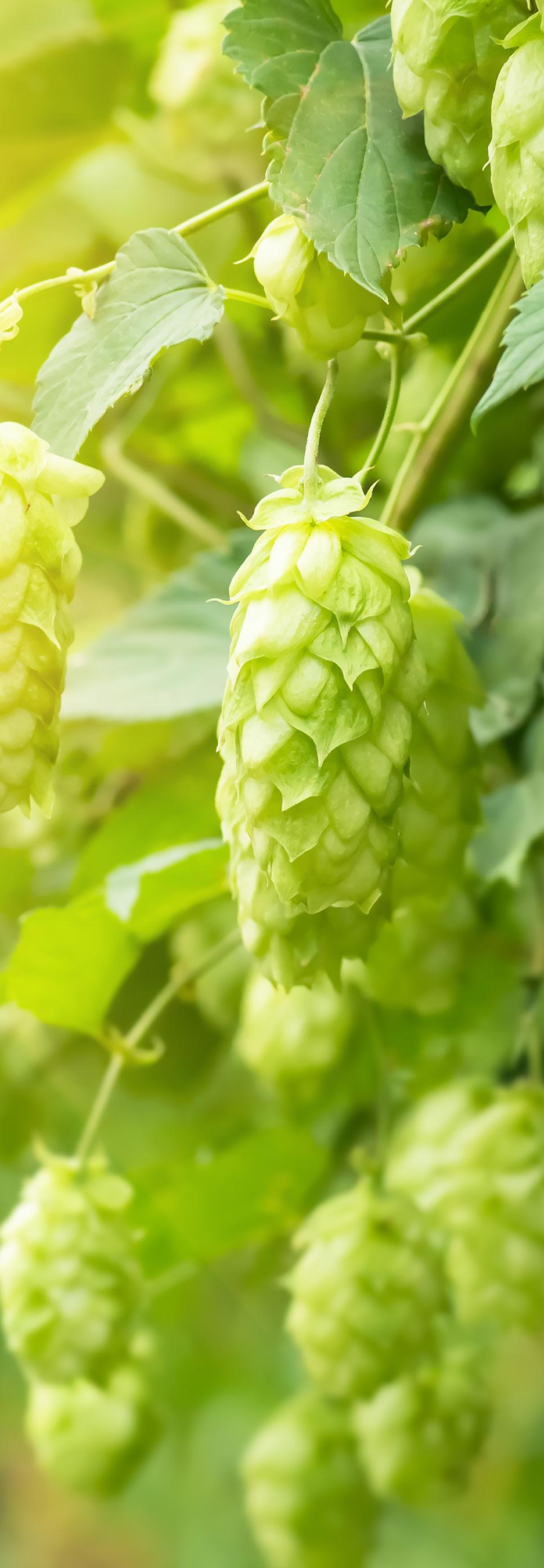
Dipl.-Ing. Walter König, Bayerischer Brauerbund e.V. München, 11.10.2022 Ohne auf Witterungsdetails und den Wachstumsverlauf in den europäischenHopfenanbaugebieten im vergangenen Jahr näher einzugehen, sei bereits zu Anfang des Berichts über die Hopfenernte 2022 das Ergebnis vorweggenommen: Die europäische Hopfenernte 2022 ist sowohl bezogen auf die Erntemenge als auch hinsichtlich der braurelevanten Inhaltsstoffe katastrophal. Die Versorgung der Brauwirtschaft kann nach einer derartigen Missernte nur durch die in den Kühllägern liegenden Ernteüberschüssen aus den guten Vorjahren und einer ausgeklügelten Verteilungslogistik gewährleistet werden. Bereits bei der offiziellen Hopfenernteschätzung in den deuts chen Hopfenanbaugebieten, die von einer neutralen Schät zkommission - bestehend aus je einem Vertreter der Hopfenp flanzer, der Hopfenforschung, des Hopfenhandels und der Brauwirtschaft - kurz vor Beginn der Ernte durchgeführt wird, war klar, dass die extrem trockene und heiße Witterung während der Hauptwachstumsphase der Hopfendolden eine Missernte ansteht. Auch die Meldungen zur Ernteerwartung aus anderen europäischen Anbaugebieten lagen unter dem lang jährigen Durchschnitt und weit hinter der guten und qualita tiv hochwertigen Ernte des Vorjahres zurück. Dabei ist im Zuge des fortschreitenden Klimawandels eindeutig zu beobachten, dass ältere Aromasorten wie Hallertauer Mittelfrüh, Saazer, Perle, Hallertauer Tradition, Hersbrucker und Spalt Spalter vom Trockenheits- und Hitzestress viel stärker beeinflusst werden als klimatolerante Neuzüchtungen.
Der weltweite Bierabsatz konnte sich nach dem pandemiebe dingten Rückgang schneller als erwartet wieder erholen. Wie dem BarthBericht 2022 zu entnehmen ist, produzierten die Brauereien wieder ca. 4% mehr Bier als im Vorjahr. Der Bedarf an Alphasäure wird sogar mit einem Plus von 7,1% zum Vorjahr angenommen. Grund dafür ist der verstärkte Einsatz alphasäu rereicher Hopfensorten im Craftbier-Sektor. Nachdem die weltweite Hopfenanbaufläche in den vergan genen 13 Jahren kontinuierlich angestiegen ist, wurde sie im Anbaujahr 2022 erstmals wieder reduziert. Die stärkste Flächen reduktion verzeichnen dabei die US-amerikanischen Anbauge
biete (-392ha oder -1,6%). Deutschland, als das zweitgrößte Anbaugebiet weltweit hielt die Anbaufläche im Saldo nahezu konstant. (- 16ha) wobei sich der Sortenumbau innerhalb der Anbaufläche weiter fortsetzt. Wie bereits in den Vorjahren ist in den deutschen Anbaugebieten ein weiterer Flächenzuwachs im Bereich der Hochalphasorten Herkules und Polaris zu verzei chnen. Auch neu gezüchtete, klimatolerante und krankheits resistente Aromasorten wie Tango und Akoja werden gegen die gerade in extremen Trockenjahren nicht mehr wirtscha ftlich zu produzierenden älteren Sorten wie Magnum oder Northern Brewer ausgetauscht. US-amerikanische Hopfenp flanzer haben hingegen die Produktion der Hochalphasorten noch weiter zurückgefahren und dem Trend der letzten Jahre folgend weitere Mengen speziellen Aromasorten wie Cascade in den Anbau gebraucht.
Bild 1: In Folge der anhaltenden Trockenheit konnten die Hopfenpflanzen die angesetzten Blüten nicht zu Dolden ausbil den. Der Doldenansatz vertrocknet und bringt keinen Ertrag.

Nach einem niederschlagsreichen Winter 2021/22 star tete die Hopfenanbausaison 2022 mit einem trockenen und warmen Frühjahr, in dem die notwendigen Arbeiten bei besten Bodenbedingungen durchgeführt werden konnten. Die Hopfenpflanzen hatten somit einen guten Start und konn ten sich gut entwickeln. Während im April noch ausreichend Niederschlagsmengen vielen waren die wichtigen Wachs tumsmonate Mai, Juni und Juli dramatisch trocken, sodass die Hopfenpflanzen stark unter der Hitze und Verdunstung des wenigen vorhandenen Wassers litten. Auch die für die Ausbil dung der Dolden und Bildung der braurelevanten Inhaltsstoffe Alphasäure, Hopfenöle und Polyphenole wichtigen Wochen vor der Ernte blieben trocken und heiß. Der Anteil der bewässerba ren Hopfenflächen in Deutschland ist mit ca. 20% der Gesam tanbaufläche im Vergleich zu anderen Hopfenanbauländern aufgrund behördlicher Vorgaben immer noch sehr niedrig. Alle europäischen Anbaugebiete litten während der gesam ten Vegetationsphase unter hohen Temperaturen und Trocke nheit. Erst mit dem Beginn der Ernte Ende August fielen die ersehnten Niederschäge. Diese kamen jedoch für die frühen Aromasorten viel zu spät. Auch die etwas späteren Hochalpha sorten konnten den Wachstumsrückstand nicht mehr aufholen, jedoch konnten diese Sorten in der Doldenausbildung und der Entwicklung der Inhaltsstoffe noch etwas von den Niederschlä gen und moderateren Temperaturen zur Erntezeit profitieren.
Die Ernteprognose der deutschen Ernte-Schätzkommission, die die Bestände kurz vor der Ernte begutachtet weist auf eine stark unterdurchschnittliche Ernte in Deutschland hin. Die bis zum Redaktionsschluss bekannten Abwaageergebnisse der geern teten Hopfenmengen sind zwar noch nicht endgültig, jedoch wird die Mengenprognose der Schätzkommission wahrschein lich nicht erreicht werden und die Ernte somit noch schlech ter ausfallen als angenommen. Darüber hinaus hat die Arbei tsgruppe Hopfenanalytik (AHA) zum Stichtag 15. Oktober 2022 die durchschnittlichen Alphasäurewerte der Hopfensorten aus der Ernte 2022 bekannt gegeben. Die Tabelle ist die offizielle Grundlage für die Anwendung der Alpha-Klausel in Aromahop fen-Lieferverträgen und regelt die Berechnung der Preis- bzw. Mengenanpassung für den Fall, dass die Alphaklausel zum Einsatz kommt.
In der Regel ist der Alphasäuredurchschnitt der letzten zehn Jahre bei Vertragsabschluss Basis für die Alphaklausel. Ist dieser Wert ausdrücklich im Vertrag genannt, tritt die Alphaklausel in Kraft sobald der Alphasäuregehalt der aktuellen Hopfenernte (2022) mehr als 15 % von diesem Durchschnittswert nach unten abweicht. Nennt der Vertrag keine Bezugsgröße bzw. keinen Bezugszeitraum, gilt der Durchschnitt der letzten zehn Jahre im Vergleich zum sortenspezifischen Durchschnitt des Erntejahres 2022. Die Alphaklausel sieht vor, dass sich das Hopfenhandel shaus bei seinen Kunden meldet und die verschiedenen Mögli chkeiten der Vertragsanpassung aufzuzeigen.
Mitglied der AHA sind die Betriebslabors der deutschen Verar beitungswerke Hallertauer Hopfen-veredelungsgesellschaft Mainburg, Hopfenveredelung St. Johann, HVG Mainburg, LfL Hüll, BLQ Weihenstephan VLB Berlin, Labor Veritas Zürich, TU Berlin und IHPS Zalec. Neben den erntefrischen Werten sind die Alphasäuregehalte der letzten Jahre sowie die aktualisierten 5- und 10-jährigen Durchschnittswerte und die prozentuale Abweichung zum Vorjahr bzw. zum 10-jährigen Durchschnitt dargestellt.
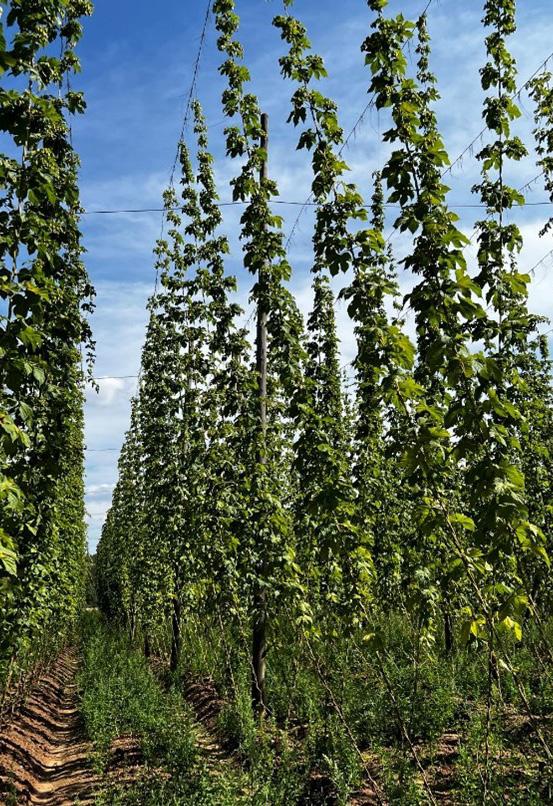
Bild 2: Die traditionellen Landsorten wie Hallertauer Mittelfrüh und Spalt Spalter bilden nur kleine, flache Wurzelballen aus und leiden somit am meisten unter trockenen und heißen Witte rungsverhältnissen wie im Anbaujahr 2022. Schwache Bestände und fehlende Inhaltsstoffe sind die Folge.
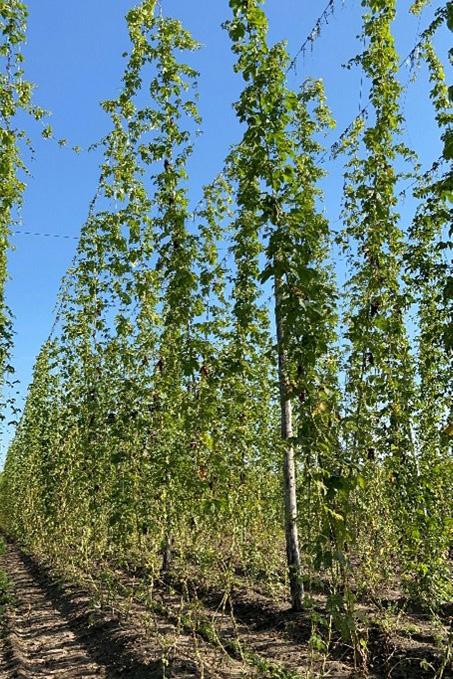
ALPHA-SÄURENWERTE VON HOPFEN DER ERNTE 2022 UND AKTUALISIERTE MEHRJÄHRIGE DURCHSCHNITTSWERTE
Anbaugebiet / Sorte
Hallertau Hallertauer
Hallertau Hersbrucker
Hallertau Saphir
Hallertau Opal
Hallertau Smaragd
Hallertau Perle
Hallertau Spalter Select
Hallertau Hallertauer Tradition
Hallertau Huell Melon
Hallertau Northern Brewer
Typ
A 3,3 4,0 2,7 4,3 3,5 3,6 4,1 4,5 5,2 3,1 4,1 3,8 -18,4 -40,4
A 1,9 2,1 2,3 2,8 2,3 2,0 2,5 3,3 4,6 1,9 2,9 2,6 -26,9 -58,7
A 2,6 3,9 2,5 4,0 3,0 3,3 3,3 4,2 4,3 2,6 3,5 3,4 -23,5 -39,5
A 5,7 7,3 5,9 7,8 7,2 6,4 7,3 8,5 8,7 6,1 7,4 7,1 -14,1 -29,9
A 4,3 4,7 5,5 6,2 4,5 3,0 5,0 5,8 7,6 4,0 5,1 5,1 -21,6 -47,4
A 5,4 8,0 4,5 8,2 6,9 5,5 6,7 7,4 9,0 4,9 6,7 6,7 -26,9 -45,6
A 3,3 4,7 3,2 5,2 4,6 3,5 4,4 5,2 6,4 3,3 4,6 4,4 -25,0 -48,4
A 5,0 5,8 4,7 6,4 5,7 5,0 5,4 6,3 6,1 5,2 5,6 5,6 -7,1 -14,8
A 5,3 5,4 5,8 6,8 6,2 5,8 6,6 7,2 8,4 6,3 6,9 6,4 -1,6 -25,0
A 6,6 9,7 5,4 10,5 7,8 7,4 8,1 9,1 10,5 6,4 8,3 8,2 -22,0 -39,0
Hallertau Polaris B 18,6 19,5 17,7 21,3 19,6 18,4 19,4 20,6 21,5 18,5 19,7 19,5 -5,1 -14,0
Hallertau Magnum B 12,6 13,0 12,6 14,3 12,6 11,6 12,3 14,2 16,0 12,2 13,3 13,1 -6,9 -23,8
Hallertau Taurus B 15,9 17,4 12,9 17,6 15,9 13,6 16,1 15,5 17,8 14,6 15,5 15,7 -7,0 -18,0
Hallertau Herkules
Tettnang Tettnanger
Tettnang Hallertauer
B 16,5 17,5 15,1 17,3 15,5 14,6 16,2 16,6 18,5 15,4 16,3 16,3 -5,5 -16,8
A 2,6 4,1 2,1 3,8 3,6 3,0 3,8 4,3 4,7 2,6 3,7 3,5 -25,7 -44,7
A 3,3 4,6 2,9 4,4 4,3 3,8 4,3 4,7 5,0 3,2 4,2 4,1 -22,0 -36,0
Spalt Spalter A 2,8 3,4 2,2 4,3 3,2 3,5 3,9 4,7 5,2 2,8 4,0 3,6 -22,2 -46,2
Spalt Spalter Select
Tschechien Saazer
Tschechien Sladek
Tschechien Premiant
Slowenien Aurora
Slowenien Savjnski Golding
A 3,3 4,5 2,5 5,5 5,2 2,9 4,1 4,7 6,4 2,8 4,2 4,2 -33,3 -56,3
A 2,9 2,9 2,1 3,4 3,0 2,9 3,4 3,6 4,0 2,8 3,3 3,1 -9,7 -30,0
A 7,0 6,6 5,0 6,5 6,2 4,3 5,4 6,8 7,7 6,0 6,0 6,2 -3,2 -22,1
A 8,0 7,6 7,0 8,5 7,6 5,1 7,1 7,8 8,5 7,8 7,3 7,5 4,0 -8,2
A 6,1 10,2 8,5 8,7 7,3 8,9 7,8 11,4 6,8 7,0 8,4 8,3 -15,7 2,9
A 2,1 3,9 2,0 3,4 2,2 3,3 3,1 4,5 2,2 2,4 3,1 2,9 -17,2 9,1
Slowenien Bobek A 2,1 6,4 5,0 4,4 3,5 4,3 4,9 5,9 3,9 3,4 4,5 4,4 -22,7 -12,8
Slowenien Golding (Celeia)
Polen Lubliner
Polen Marynka
Polen Sybilla
A 2,2 4,7 3,2 3,2 2,8 3,0 3,4 4,1 3,3 2,6 3,3 3,3 -21,2 -21,2
A 4,3 2,3 3,4 3,2 3,2 2,1 4,6 5,0 3,5 4,0 3,8 3,6 11,1 14,3
A 8,3 8,2 8,6 8,1 8,7 6,9 7,8 8,8 7,5 8,7 7,9 8,2 6,1 16,0
A 5,9 5,9 4,5 6,1 5,4 4,1 5,3 6,6 6,5 6,2 5,7 5,7 8,8 -4,6
Tabelle 1: Alpha-Säurenwerte von Hopfen der Ernte 2022 und aktualisierte mehrjährige Durchschnittswerte – Teil 1
Sowohl bei Bitterhopfensorten als auch bei den vom Klimawan del und der diesjährigen Missernte betroffenen Aromasorten ist eine vollständige oder teilweise Substitution mit Hopfen sorten, die am Markt ausreichend zur Verfügung stehen, zu prüfen. Dies ist bei Hopfensorten, die zu Kochbeginn der
Würze zugeben sicherlich einfacher als bei späten Gaben. Hier sind im Markt verfügbare Sorten wie Diamant, Aurum, Polaris, Mandarina Bavaria, Calista, Ariana, Hüll Melon und Hallertau Blanc zu nennen, die aufgrund des Zuchtfortschritts die Hitze und Trockenheit des Sommers besser überstanden haben und weniger Ertrags- und Inhaltsstoffverluste hinnehmen mussten. Auch wenn diese Sorten im Kaltbereich spezielle Aromen ins Bier bringen können, wurden sie nicht ausschließlich für den
Craftbier-Sektor entwickelt sondern können auch im Heißbe reich zur Erzeugung einer angenehmen Bittere und für eine klassisch, hopfenbetonte Aromatisierung verwendet werden. Mit dem Klimawandel und fehlenden Wirkstoffen für den inte grierten Pflanzenschutz fühlen sich zunehmend Schädlinge und neue Krankheiten in den Hopfengärten wohl. Beispiel sweise hat sich die Population des Erdflohs stark vergrößert. Der Erdfloh wandert entlang der Rebe hoch zu den Blättern und Dolden, die er dann durchlöchert. Ist die Wasser- und Nährs toffzufuhr einer Dolde vom Erdfloh unterbrochen, stirbt ein Teil der Dolde binnen Tagen ab und wird unbrauchbar. Aktuell haben die europäischen Hopfenpflanzer kein wirksames Pflan
zenschutzmittel gegen den sich stark ausbreitenden Schädling. Die Verfügbarkeit von wirksamen Pflanzenschutzmitteln für alle Indikationen wird durch Vorgaben des Europäischen Green Deal aber auch durch restriktive Regelungen in den Export märkten für Hopfen aus Europa zunehmend verknappt. Deshalb fehlen auch zunehmend Pflanzenschutzmittelwirks toffe gegen Blattkrankheiten wie Mehltau und Peronospora sowie gegen andere saugenden Schädlinge wie die gemeine Spinnmilbe und die Blattlaus. Im Hopfenforschungszentrum Hüll in der Hallertau arbeiten die Forscher mit Hochdruck an der Züchtung gesünderer und resistenter Pflanzen sowie an natürlichen Pflanzenschutzmitteln. Züchtung und Forschung brauchen jedoch Zeit.
Flache(ha) Ertrage(t) Alpha(t) 2021 2022 2021 2022 2021 2022
USA 24.634 24.239 52.857 48.000 5.920 5.400
Deutschland 20.620 20.604 47.862 35.850 6.240 3.900 Tschechien 4.971 4.950 8.306 4.400 400 230 China• 2..480 2.534 6.300 6.700 580 600 Polen 1.758 1.726 3.108 3.205 264 296 Slowenien 1.535 1.626 2.186 2.500 114 130 Australien 787 919 1.704 1.824 262 279 Neuseek:Jnd• 743 743 l.250 1.250 115 115 GroBbritannien 670 64‘ 912 788 68 58 Spanien 568 579 957 912 112 109 Frankreich 557 547 910 804 38 33 SGdafrika• -409 409 715 751 89 108 Ukraine• 369 369 -480 480 30 30
!Canada• 350 350 525 525 53 53 Rumanien 267 272 230 240 20 18 Osterreich 255 263 394 485 37 37
Rus.sland• 254 254 350 350 20 20 Belgien 182 182 292 257 29 23 Argentinien 178 178 268 325 26 29
JaDOn• 106 106 202 202 25 25 Slowakei 38 38 40 40 2 2 Bulgarien 33 33 53 58 6 6 Serbien 8 8 16 16 2 2 IHGC 61.772 61.575 129.917 109.962 14.452 11.503
Tabelle 2: Ernteerwartung von erntefrischem Hopfen im Vergleich zu den tatsächlichen Erntemengen in den Vorjahren. Quelle: IHGC Berichte vom Juli 2022 (plus aktuelle Einschätzungen, erstellt von HVG Germany, *Daten China aus April 2022))
Die Hopfenernte ist zwar abgeschlossen, dennoch gibt es noch keine endgültigen Ergebnisse zur Abwaage der Erntemenge. Die Ertragsschätzungen liegen jedoch in allen Anbauregio nen weit unter Vorjahr und sind mit früheren Misserntejahren wie 2015 zu vergleichen. So schätzt die Schätze-Kommis sion für die deutschen Anbaugebiete einen Gesamtertrag von 35.850 t (47.862 t Vorjahr). Auch aus den anderen europäis chen Hopfenbaunationen wie Tschechien (- 47%), Oesterreich und Frankreich werden geringere Erntemengen als im Vorjahr erwartet. Lediglich in Slowenien bleibt die Erntemenge jedoch aufgrund der Flächenausweitung mit rund 2500 t konstant.
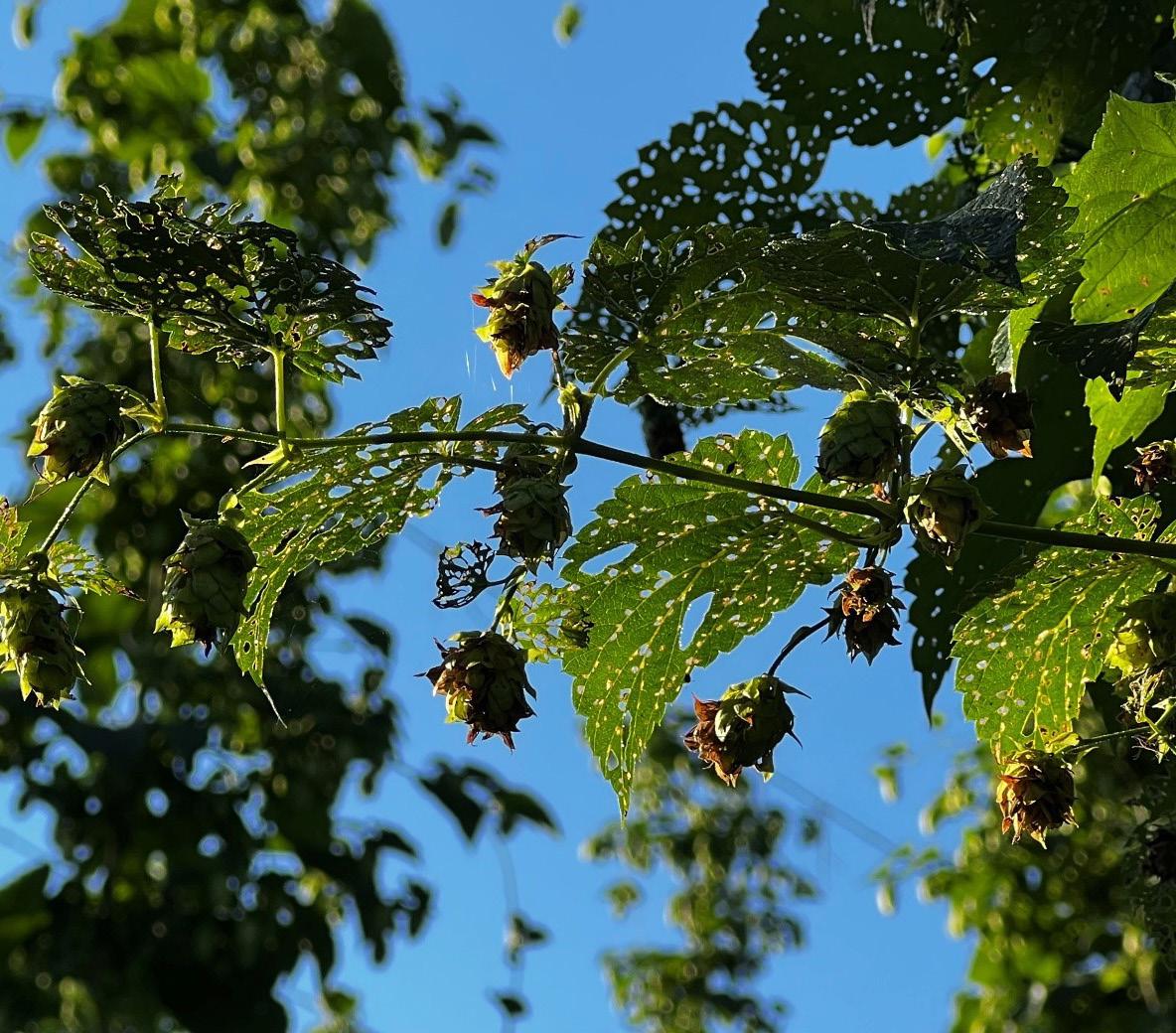
Auch wenn über 90 % der Hopfenproduktion bereits im Vorfeld der Ernte zu Festpreisen von den Hopfenproduzenten gekauft und an Brauereien als Verarbeitungsprodukte weiterverkauft wurden, ist mit der Ernte 2022 und der enormen Kostenstei gerung im Energiesektor langfristig mit steigenden Kosten für den Bierrohstoff Hopfen zu rechnen.
Ernte Braujahr
von Angebot
Bedarf
Bild 3: Von Erdflöhen geschädigte Hopfenpflanze mit durchlö cherten Blättern und abgestorbenen Dolden. Der Befall ist ertra gsmindernd und wirkt sich auf eine schlechte optische Qualität der Hopfenpartien aus.
2012 2013 2014 2015 2016 2017 2018 2019 2020 2021
9.251 9.139
9.244 9.602 10.122 7.760
10.533 Alphaangebot in t Alphabedarf in t
12.690
10.754 11.194 11.261 11.081 11.866 11.681 11.809 10.925
12.675 11.826
2018 2019 2020 2021 2022
14.173 8.171 Bild 4: Die Versorgungsbilanz des Deutschen Hopfenwirtschaftsverbands zeigt einen deutlichen Überschuss in der weltweiten Alphasäureproduktion aus den Ernten 2020 und 2021 mit dem die unter dem Alphabedarf liegende Hopfenernte 2022 ausgegli chen werden kann.
Bild 5: Der zeitgleiche Wachstumsvergleich des Wurzelsto cks einer traditionellen Landsorte wie Hallertauer Mittelfrüh (links) mit einer Zuchtsorte wie Tango (rechts) zeigt deutlich die Vorteile der Neuzüchtung bei Trockenperioden mit ausbleiben den Niederschlägen.
Dieser Vorkontraktmarkt, der stets das Rückgrat der Hopfenwir tschaft war, wird durch die unkalkulierbaren Produktionskosten zunehmend schwieriger. Schon heute sind die Margen, die die Hopfenpflanzer und Vermarkter über die in der Vergangenheit abgeschlossenen Verträge erzielen können, viel zu niedrig, um die enormen Risiken abfedern zu können. Im Erntejahr 2022 treffen nun gestiegene Produktionskosten und niedrige Hekta rerträge aufeinander. Abgeschlossene Verträge werden nicht in vollem Umfang von der Landwirtschaft an die Handels- und Verarbeitungsfirmen erfüllt werden können. Es wird zu deutli chen Vertragsunterlieferungen seitens der Hopfenpflanzer kommen. Diese Kombination aus niedrigen Mengen bei glei chzeitig stark erhöhten Kosten führt zu enormen finanziellen Belastungen bei Hopfenpflanzern und –vermarktern nach der Ernte 2022.
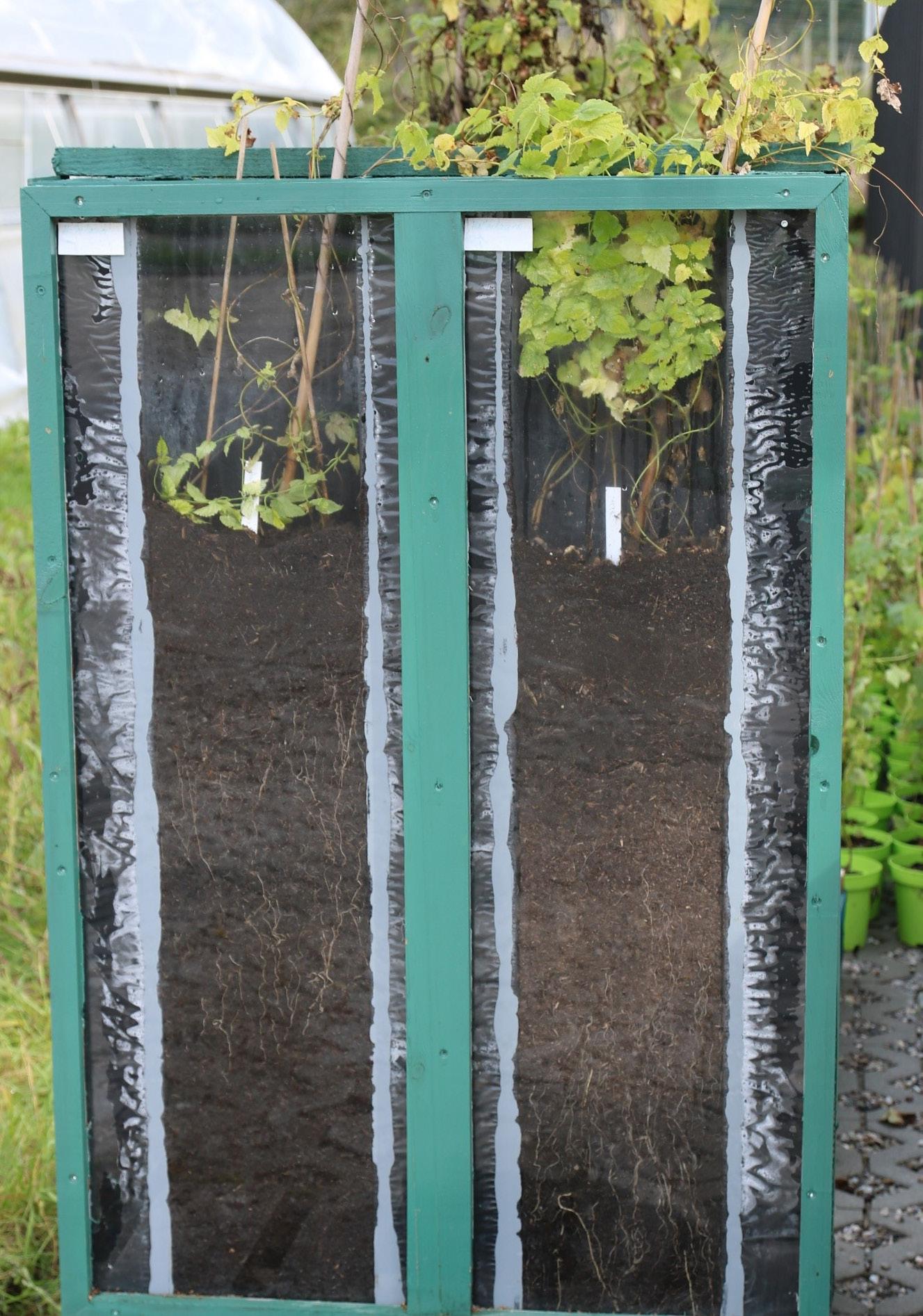
Das Hopfenjahr 2022 hat der gesamten Wertschöpfungskettet Hopfen wieder einmal vor Augen geführt, dass unser Bierrohs toff Hopfen unter freiem Himmel wächst und mit zunehmen dem Klimawandel starken Witterungsschwankungen ausgelie fert ist. Der gesamte Hopfenmarkt und somit die Versorgung der Brauwirtschaft mit genügend gesundem, rückstandsfreiem und qualitativ hochwertigem Hopfen kann nur durch einen Umbau der gesamten Hopfenproduktion stabilisiert werden. Hierfür müssen die alten traditionellen Landsorten, die dem fortschreitenden Klimawandel nicht mehr gewachsen sind von klimatoleranten, gesunden und krankheitsresistenten Sorten abgelöst werden. Auch vor dem Hintergrund der nachhaltigen Unternehmensführung werden Hopfensorten, die mit weniger Pflanzenschutzmittelbehandlungen und reduzierten Dünge mengen auskommen ältere Sorten ablösen müssen. Die Züchtung klimatoleranter Hopfensorten mit einer breiten Resistenzausstattung gegen Krankheiten und Schädlinge ist der wichtigste Ansatz, um diesen Herausforderungen zu begegnen. Damit diese Hopfensorten jedoch angebaut werden und einen Markt finden, müssen Sie zeitnah in den Rezepturen der Braue reien Eingang finden. Hilfestellung erfahren Braumeister bei den Hopfenforschungszentren Hüll und Žalec sowie beim tech nischen Support der Hopfenhandelsfirmen.
Fotos: Dipl.-Ing. Walter König, Bayerischer Brauerbund e.V.Munich, 11.10.2022. Without going into depth about the analysis of the weather conditions and the development of the European acreage dedicated to the culture of hops of the last year, it is already clear that the hop harvest 2022 is a disaster, irrespective of whether we consider the quantity of the harvest or the material relevant for brewing. The supply of the brewing sector after such a dramatic year can only be managed through the over production of the previous year and well-designed logistics.
It was already clear during the official pre-harvest estimate in Germany, led shortly before the harvest by the commission tasked with estimating the harvest potential (a team composed of representatives of the hop growers, the hop research institutes, the hop merchants and the brewing industry) that the extremely dry and hot weather during the growth phase would lead to a poor harvest. Equally, the estimates coming from other European hop growing areas were below the longtime average and well behind the qualitatively good harvest of last year. It is to be observed that the old aroma varieties – such as Hallertau Mittelfrüh, Saaz, Perle, Hallertau Tradition, Hersbrucker and Spalt Spalter – are much more impacted by drought and heat stress as a result of climate change, than climate-tolerant new varieties.
The worldwide beer consumption recovered more rapidly than expected following the drop forced by the pandemic. As indicated by the Barth Report 2022, breweries produced 4% more volume than in the previous year. The need for alphaacids consequently increased by 7,1% compared to the previous year. This is to be explained by the increased use of high-alpha hop varieties by craft breweries.
After a 13-year long continuous increase, the area dedicated to hop growing decreased for the first time in 2022. The American hop growers witnessed the strongest reduction (minus 392ha, or -1.6%). Germany, as the second largest hop growing area in the world, remained approximately stable (-16ha) with a continuing modification in terms of shares of varieties. As already witnessed in the last years, the increase in surface dedicated to high-alpha varieties such as Herkules and Polaris
Picture 1: As a consequence to the drought, the hop plants could not turn the flower into cones. The embryo cones dried and did not bring any yield.
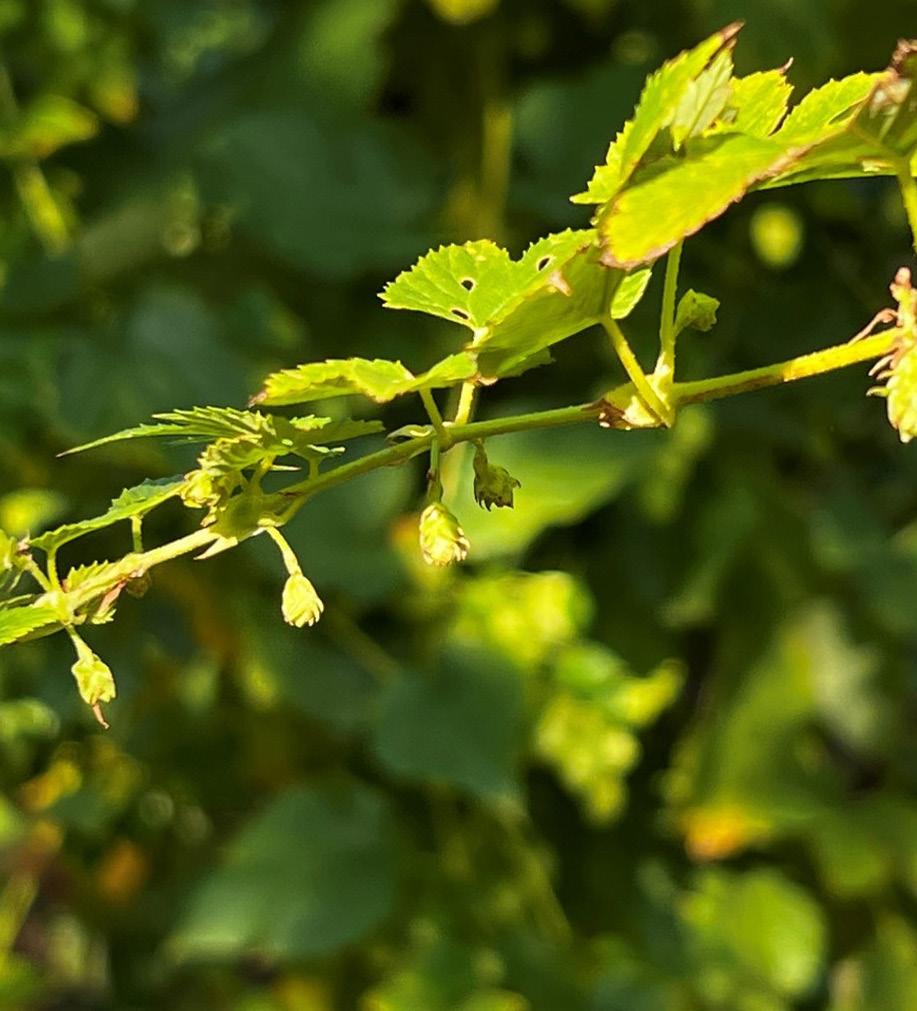
has continued. Also, new breeds, climate-tolerant and diseaseresistant varieties such as Tango and Akoja are replacing old varieties (such as Magnum and Northern Brewer) which were already not economically viable anymore in extremely dry years. US hop growers have however continued the production of high-alpha varieties and increased the area dedicated to aroma-varieties like Cascade following the trend.
After a winter 2021/2022 with high rainfall, the hop season 2022 started with a dry and warm spring allowing for optimal soil conditions. The hop plants had therefore a good start and developed very well. Whilst the rainfall was still sufficient in April, the important growth months of May, June and July were very dry, which led the hop plants to suffer from heat and water stress. Equally, the development of the cones and lupulin glands, the hop oils and polyphenols in the weeks preceding the harvest was impaired by the weather which remained too dry and hot. The irrigated surface in Germany, with 20% of the total area dedicated to hop growing, remains comparatively low to other countries because of water regulations. All other European hop growing region faced similar high temperature and drought during the vegetation phase. The long-expected rainfall only came at the end of August, just before the beginning of the harvest. This was, however, much too late for the aroma varieties. Even the late high-alpha varieties could not recover the shortfall, although the cone development and the hop compounds slightly benefited from the rain and the moderate temperatures near harvest time.
The harvest estimate by the German harvest commission had already warned of a harvest which would be well below average. Although the tonnage data that are known at the time of writing this article were not final, it is clear that the predic tions of the commission will fall short of our worst expecta tions. In addition to this, the Working Group on Hop Analysis
(AHA) has published the average alpha content of the hop varie ties for the 2022 harvest at its reporting date on the 15th of October. The table serves as the official justification for the acti vation of the alpha clause in the supply contract for aroma hop regulating the price. Accordingly, the quantity adjustment in case the alpha clause would be activated.
Typ
Hallertau Hallertauer
Hallertau Hersbrucker
Hallertau Saphir
Hallertau Opal
Hallertau Smaragd
Hallertau Perle
Hallertau Spalter Select
Hallertau Hallertauer Tradition
Hallertau Huell Melon
A 3,3 4,0 2,7 4,3 3,5 3,6 4,1 4,5 5,2 3,1 4,1 3,8 -18,4 -40,4
A 1,9 2,1 2,3 2,8 2,3 2,0 2,5 3,3 4,6 1,9 2,9 2,6 -26,9 -58,7
A 2,6 3,9 2,5 4,0 3,0 3,3 3,3 4,2 4,3 2,6 3,5 3,4 -23,5 -39,5
A 5,7 7,3 5,9 7,8 7,2 6,4 7,3 8,5 8,7 6,1 7,4 7,1 -14,1 -29,9
A 4,3 4,7 5,5 6,2 4,5 3,0 5,0 5,8 7,6 4,0 5,1 5,1 -21,6 -47,4
A 5,4 8,0 4,5 8,2 6,9 5,5 6,7 7,4 9,0 4,9 6,7 6,7 -26,9 -45,6
A 3,3 4,7 3,2 5,2 4,6 3,5 4,4 5,2 6,4 3,3 4,6 4,4 -25,0 -48,4
A 5,0 5,8 4,7 6,4 5,7 5,0 5,4 6,3 6,1 5,2 5,6 5,6 -7,1 -14,8
A 5,3 5,4 5,8 6,8 6,2 5,8 6,6 7,2 8,4 6,3 6,9 6,4 -1,6 -25,0
Hallertau Northern Brewer A 6,6 9,7 5,4 10,5 7,8 7,4 8,1 9,1 10,5 6,4 8,3 8,2 -22,0 -39,0
Hallertau Polaris B 18,6 19,5 17,7 21,3 19,6 18,4 19,4 20,6 21,5 18,5 19,7 19,5 -5,1 -14,0
Hallertau Magnum B 12,6 13,0 12,6 14,3 12,6 11,6 12,3 14,2 16,0 12,2 13,3 13,1 -6,9 -23,8
Hallertau Taurus
B 15,9 17,4 12,9 17,6 15,9 13,6 16,1 15,5 17,8 14,6 15,5 15,7 -7,0 -18,0
Hallertau Herkules B 16,5 17,5 15,1 17,3 15,5 14,6 16,2 16,6 18,5 15,4 16,3 16,3 -5,5 -16,8
Tettnang Tettnanger
Tettnang Hallertauer
A 2,6 4,1 2,1 3,8 3,6 3,0 3,8 4,3 4,7 2,6 3,7 3,5 -25,7 -44,7
A 3,3 4,6 2,9 4,4 4,3 3,8 4,3 4,7 5,0 3,2 4,2 4,1 -22,0 -36,0
Spalt Spalter A 2,8 3,4 2,2 4,3 3,2 3,5 3,9 4,7 5,2 2,8 4,0 3,6 -22,2 -46,2
Spalt Spalter Select
Tschechien Saazer
Tschechien Sladek
Tschechien Premiant
Slowenien Aurora
Slowenien Savjnski Golding
Slowenien Bobek
Slowenien Golding (Celeia)
Polen Lubliner
Polen Marynka
Polen Sybilla
A 3,3 4,5 2,5 5,5 5,2 2,9 4,1 4,7 6,4 2,8 4,2 4,2 -33,3 -56,3
A 2,9 2,9 2,1 3,4 3,0 2,9 3,4 3,6 4,0 2,8 3,3 3,1 -9,7 -30,0
A 7,0 6,6 5,0 6,5 6,2 4,3 5,4 6,8 7,7 6,0 6,0 6,2 -3,2 -22,1
A 8,0 7,6 7,0 8,5 7,6 5,1 7,1 7,8 8,5 7,8 7,3 7,5 4,0 -8,2
A 6,1 10,2 8,5 8,7 7,3 8,9 7,8 11,4 6,8 7,0 8,4 8,3 -15,7 2,9
A 2,1 3,9 2,0 3,4 2,2 3,3 3,1 4,5 2,2 2,4 3,1 2,9 -17,2 9,1
A 2,1 6,4 5,0 4,4 3,5 4,3 4,9 5,9 3,9 3,4 4,5 4,4 -22,7 -12,8
A 2,2 4,7 3,2 3,2 2,8 3,0 3,4 4,1 3,3 2,6 3,3 3,3 -21,2 -21,2
A 4,3 2,3 3,4 3,2 3,2 2,1 4,6 5,0 3,5 4,0 3,8 3,6 11,1 14,3
A 8,3 8,2 8,6 8,1 8,7 6,9 7,8 8,8 7,5 8,7 7,9 8,2 6,1 16,0
A 5,9 5,9 4,5 6,1 5,4 4,1 5,3 6,6 6,5 6,2 5,7 5,7 8,8 -4,6
Table 1: Alpha-acid values of hops for the harvest 2022 and updated long-time average values – Part 1
Picture 2: The traditional landraces such as Hallertau Mittel früh and Spalt Spalter only develop short, flat roots and there -fore suffer more from the dry and hot weather like in 2022. Low yield and a lack of desirable aroma compounds are the consequence.
Normally, the ten-year average value of alpha-acids serves as the basis for the alpha clause in contracts. In case this value is explictly mentioned in the contract, then the alpha clause auto matically enters into force in case the alpha-content of the hop harvest (2022) is 15% lower than this ten-year average value. In case the contract does not mention any reference value or any reference period, then the ten-years average value of similar hop varieties is taken into account and compared to the value of the harvest year (2022). The apha-clause foresees that the hop merchant contacts his clients and proposes different possi bilities to adjust the contract.
Members of the AHA are the laboratories of the German processing facilities Hallertauer Hopfen-veredelungsgesells chaft Mainburg, Hopfenveredelung St. Johann, HVG Mainburg, LfL Hüll, BLQ Weihenstephan VLB Berlin, Labor Veritas Zürich, TU Berlin and IHPS Zalec.
Besides listing fresh harvest values, the alpha content of the last years as well as the updated 5- and 10-year average values and percentage deviations (compared to the previous year and to the last 10 years average) are presented.
The full or partial substitution of bittering varieties as well as aroma varieties which are impacted by climate change and this year’s low harvest by varieties which are sufficiently available on the market needs to be investigated. This will be easier for the hop varieties which are used at the start of the boil than for the late addition. Some varieties, such as Diamant, Aurum, Pola ris, Mandarina Bavaria, Calista, Ariana, Hüll Melon and Haller tau Blanc, to name a few, have shown better resilience to the summer heat and the drought and have not lost as much yield and other, essential compounds due to research and develo pment efforts, as well as breeding and selection. Even if these varieties can impart special aromas on the cold side, they were not developed specifically for the craft beer sector and can also be used on the hot side to impart a specific bitterness. They also to add a classic, hop-forward, aroma. With climate change and lack of pesticide active substances, new diseases and ensuing damage has manifested itself in the hop gardens. The population of flea beetles, for example,
Picture 3: Hop plant damaged Leaves that have been damaged with holes and died cones. The consequence is a reduced yield and a poor outlook of the hop.



has grown considerably. Flea beetle climb the bines up to the leaves and the cones in which it then bores holes. If the water and nutrient flows to the cone are cut off, parts of the cone dies within days. European hop growers have no efficient plant protection means again this growing menace so far. The availability of effective all-encompassing plant protection substances also means that they will be progressively reduced through measures foreseen in the EU Green Deal, as well as by restrictive regulations in the hop export markets for European hop producers.
That is one of the reasons why efficient protection substances against leaf diseases like mildew and Peronospora, and also against other pest like the common spider mite or the lice, are becoming increasingly scarce. The researchers of the Hüll Hop Research Centre in the Hallertau, are working under increasing pressure to develop new resistant plant as well as natural plant protection substances. Breeding and research both require time and long-term planning.
2021 2022 2021 2022 2021 2022
USA 24.634 24.239 52.857 48.000 5.920 5.400
Deutschland 20.620 20.604 47.862 35.850 6.240 3.900
Tschechien 4.971 4.950 8.306 4.400 400 230
China• 2..480 2.534 6.300 6.700 580 600
Polen 1.758 1.726 3.108 3.205 264 296 Slowenien 1.535 1.626 2.186 2.500 114 130 Australien 787 919 1.704 1.824 262 279 Neuseek:Jnd• 743 743 l.250 1.250 115 115
GroBbritannien 670 64‘ 912 788 68 58 Spanien 568 579 957 912 112 109 Frankreich 557 547 910 804 38 33
SGdafrika• -409 409 715 751 89 108 Ukraine• 369 369 -480 480 30 30
!Canada• 350 350 525 525 53 53 Rumanien 267 272 230 240 20 18 Osterreich 255 263 394 485 37 37
Rus.sland• 254 254 350 350 20 20 Belgien 182 182 292 257 29 23 Argentinien 178 178 268 325 26 29
JaDOn• 106 106 202 202 25 25
Slowakei 38 38 40 40 2 2 Bulgarien 33 33 53 58 6 6
Serbien 8 8 16 16 2 2
IHGC 61.772 61.575 129.917 109.962 14.452 11.503
Table 2: Expected harvest of freshly harvested hops compared to the real harvest of the previous year. Source: IHGC Report from July 2022 (plus current estimates, produced by HVG Germany. * Chinese data from April 2022).
Ernte Braujahr
9.251 9.139
9.244 9.602 10.122 7.760
2012 2013 2014 2015 2016 2017 2018 2019 2020 2021 2013 2014 2015 2016 2017 2018 2019 2020 2021 2022
10.533 Alphaangebot in t Alphabedarf in t
12.690
10.754 11.194 11.261 11.081 11.866 11.681 11.809 10.925
12.675 11.826
14.173 8.171 Picture 4: The balance of the German Hop Producers Federation shows a clear surplus in the pro-duction of alpha acids vs the demand in alpha acids in the harvest 2020 and 2021with which the hop harvest 2022 can be compared.
Altough the harvest is finished, there are still no final results regarding the tonnage. However, all estimates lay well below that of the previous year and can be compared to poor harvest year such as 2015. The German Commission for Estimate consi ders the harvest will be of 35.850t (compared to 47.862t last year). In other European countries like in Czech Republic (-47%), Austria and France, smaller harvest are expected. Only in Slove nia has the harvested quantity remained stable with 2500t, due to an increased area dedicated to hop growing.
Even if 90% of the hop production is sold pre-harvest time under forward contracts, the cost of hop as raw material for the brewing sector is still expected to rise due to the poor harvest 2022 and the increasing energy costs. This forward contract market, which has always served as the backbone of the hop economy, is becoming ever more diffi cult due to the unpredictable production costs. The margins which used to be achieved by the hop growers and merchants
on the basis of the contracts concluded in the past, are now too narrow to cover the enormous risks. The harvest 2022 is bringing increased production costs and reduced yield per hectare into the equation. Contracts will probably not be fulfil led by trading and processing companies. It will lead to consi derable short-selling by the hop growers. This combination of low margins and strongly increased costs will lead to financial difficulties for the hop growers and hop merchants due to the harvest 2022.
The hop year 2002 has once again demonstrated that the beer ingredient hop is a natural product and is subject to weather fluctuations dictated by climate change. The entire hop market, and thus the supply of the beer industry with sufficiently heal thy, clean, high-value and qualitative hop, can only be secured through the adjustment of hop production. Therefore, the old traditional landraces which are not built to resist the increasing climate change must be replaced by climate-tolerant, healthy and disease-resistant varieties. Also, from a sustainable busi ness running perspective, the old varieties must be replaced
by varieties which require less plant protection treatment and less fertilisers.
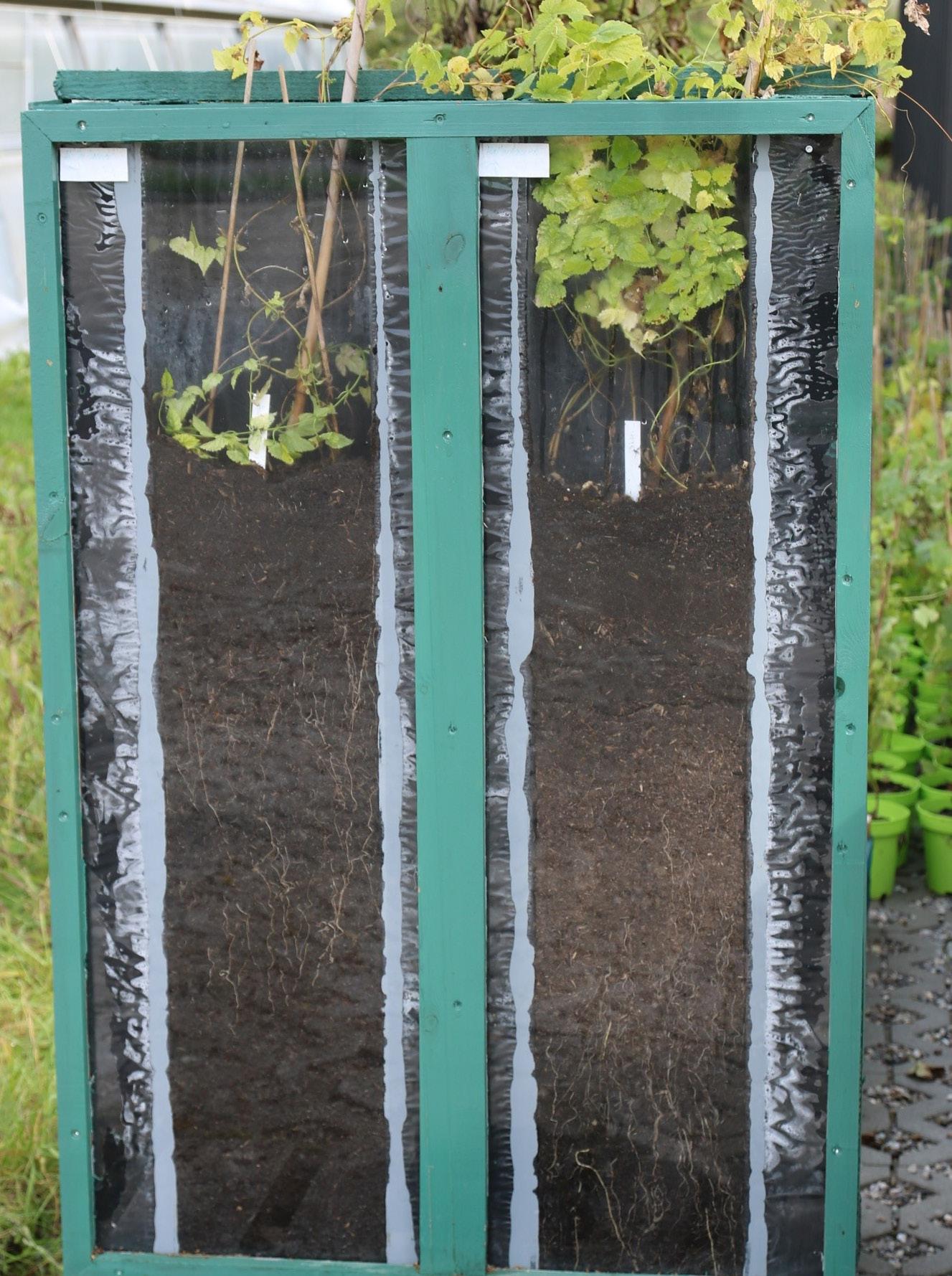
The breeding of climate-tolerant hop varieties with a broad resistance capacity against diseases and pest is the most impor tant paradigm to successfully meet the challenge. To ensure those varieties can be cultivated and find a market, they must be very soon used in the recipes of the breweries. Brewers can benefit from the support of the hop research centres in Hüll and Žalec as well as from technical support offered by big hop trading companies.
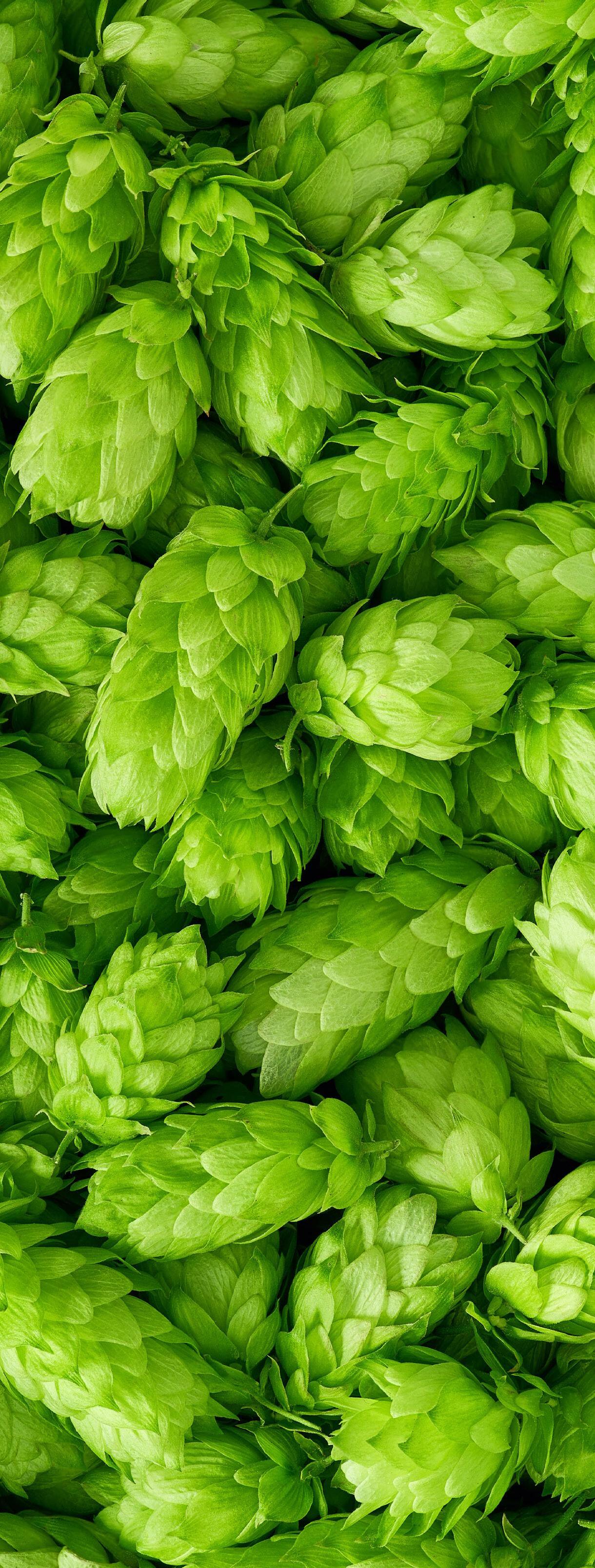 Picture 5: The compared growth of the roots of a traditio nal landrace such as Hallertauer Mittelfrüh (links) and a bred variety such as tango (right) shows clearly the advantage of the new varieties during drought periods characterised by severely reduced rainfall.
Pictures: Dipl.-Ing. Walter König, Bayerischer Brauerbund e.V.
Picture 5: The compared growth of the roots of a traditio nal landrace such as Hallertauer Mittelfrüh (links) and a bred variety such as tango (right) shows clearly the advantage of the new varieties during drought periods characterised by severely reduced rainfall.
Pictures: Dipl.-Ing. Walter König, Bayerischer Brauerbund e.V.

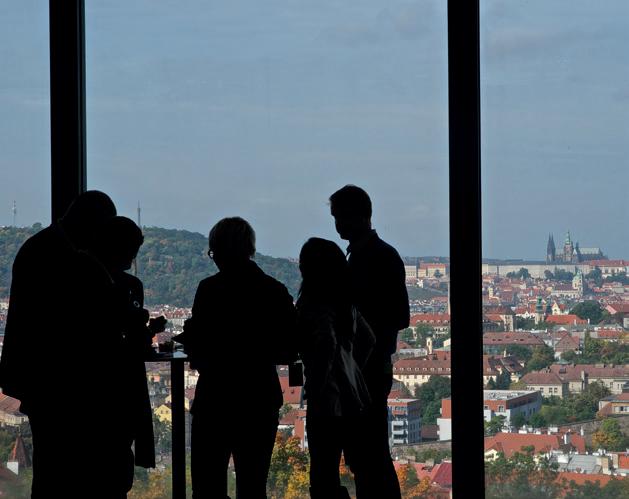
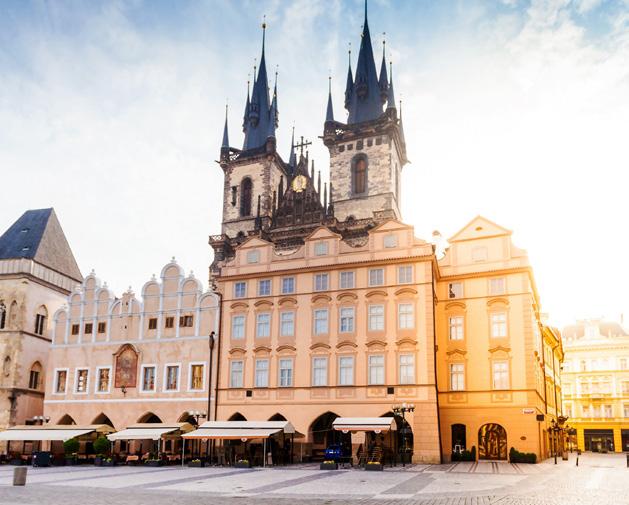



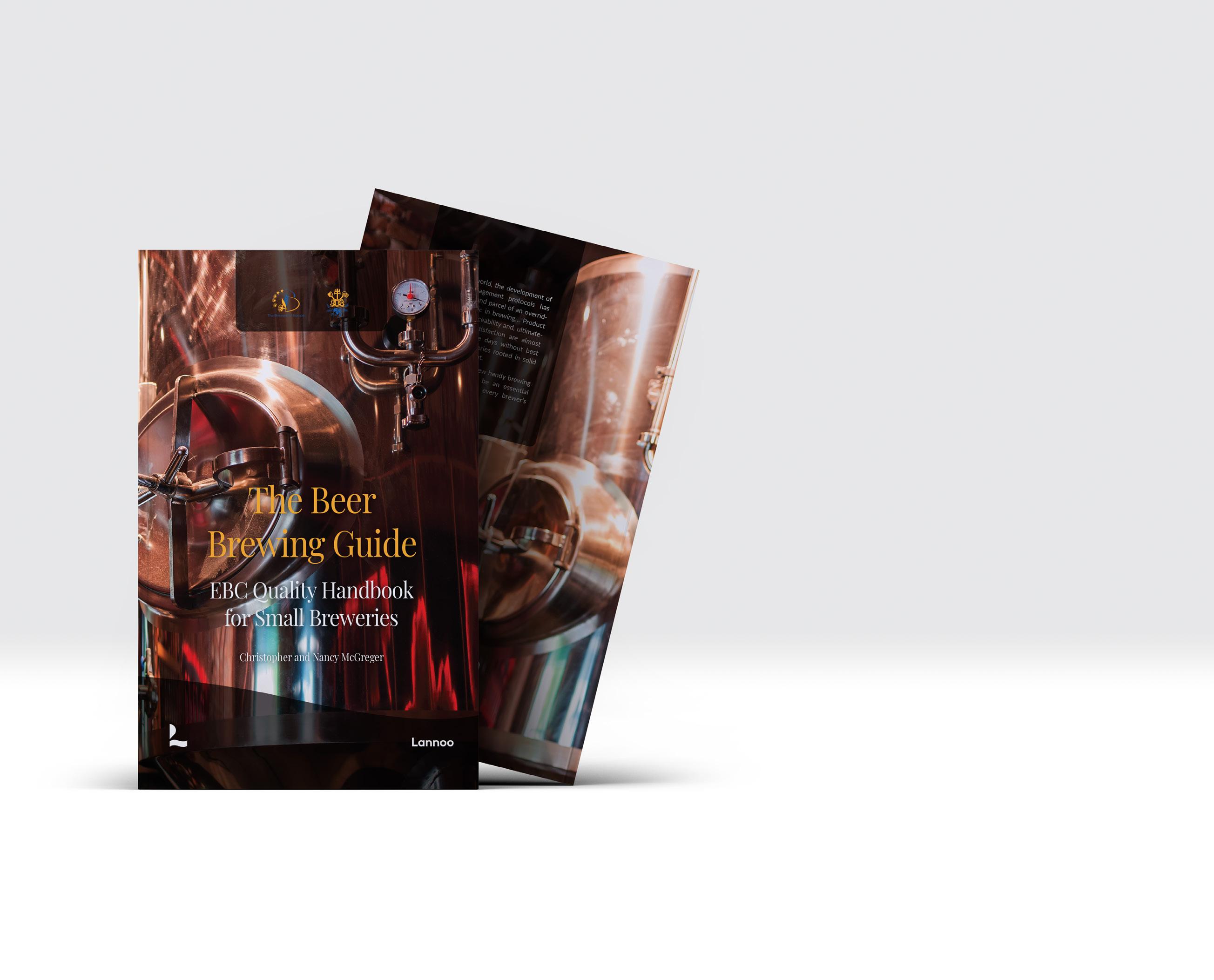

Europe finds itself in a ‘perfect storm’. Demand shocks after two years of covid pandemic which saw long-time closure of key channels such as horeca and food service, cost inflation of agricultural commodities and other inputs such as packaging, labour shortages, and - if it weren’t enough - energy uncertainty spurred by Russia’s invasion of Ukraine.
The situation for companies in the food and drink sector, Euro pe’s largest manufacturing sector in terms of turnover, employ ment and value added, has never been so dire.
Moments of crisis reveal the best and the worst of societies, governments and supply chains. During covid, the European agri-food and drink supply chain continued supplying despite various emerging challenges, such as border closure.
On the upside, it has shown the resilience and inventiveness of Europe’s food and drink systems. Producers ensured that supermarkets remained stocked throughout, the hospitality sector did its utmost to find alternative ways to bring food and drinks to the people. Today, companies across Europe – inclu ding in the brewing sector – are expressing huge solidarity to the people of Ukraine and keep providing joy, pleasure and taste to millions of consumers despite the difficult circumstan ces.
On the other hand, the crises of the past and today are showing vulnerabilities, too. Our interdependent and integrated way of working with various actors in the supply chain – while provi ding a lot of value in itself – can complicate adequate emer gency responses.
A case in point is the shortages of (industrial) carbon dioxide (CO2), which is critical for the brewing process, but also for
other applications in the food and drink sector (packaging, stunning of meat before slaughter, etc.).
As CO2 is a by-product of ammonia fertiliser production, and a handful of fertiliser companies are dominating the market, ensuring continued access to sufficiently available and affor dable CO2 is increasingly challenging. The issue of shortages was already present before the war and the covid pandemic, but has worsened in recent times due to sky-rocketing energy prices.
With fertiliser production being heavily dependent on gas and the food and drink sector not necessarily always being conside red ‘first in line’, the knock-on effects are clear and obvious. This is an unsustainable situation, which needs to be resolved as a matter of urgency.
FoodDrinkEurope is actively pleading with EU Institutions to consider the critical role of the food and drink sector, brewing included, for the proper functioning of society. If shortages are to be avoided in the upcoming winter and in 2023, it is impera tive that policymakers understand that food and drink produc tion requires continuous, uninterrupted supply of critical inputs such as energy (but also water, for that matter) in order to guarantee a continued supply of food and drinks. In these times, maximum flexibility must be provided to companies to be able to switch to alternative sources of energy. No energy, no drinks.
In addition, FoodDrinkEurope, supported by The Brewers of Europe, has called on the EU to put forward a CO2 strategy, to anticipate future crises. It is anticipated that the European Commission will soon come with a proposal for an EU Fertiliser

Strategy, which could form a good basis. Such a strategy could include more structural monitoring of CO2 supply across the EU, mechanisms that would temporarily cap the price of CO2 on the market in the case of shortage and incentives for fertili zer companies to maintain food-grade CO2 production. It is clear that also our industry needs to re-think its reliance on fossil fuels and accelerate the shift towards more renewable energy. The European food and drink industry has managed to reduce its energy consumption by 20% over the last decade, but more needs to be done. Energy- and resource-efficiency should be Chefsache, recurrent C-suite material. Furthermore, diversification in raw material supply and trade can help build resilience too – not only for companies individually, but also for the sector as a whole.
FoodDrinkEurope has recently published a paper with a set of 9 recommendations to strengthen the resilience of Europe’s food and drink systems, looking at short-, medium- and long-term needs.1 I invite you to have a look at it and use it as your talking points when engaging with policymakers and other stakehol ders. It is obvious that we cannot do this alone, so support from governments, value chain partners and citizens will be needed. While the outlook for the upcoming months may look bleak, I am optimistic that we will get out of this crisis stronger - more mindful of the vulnerabilities we face and the opportunities we can identify, making our food systems more future-proof. Cheers to a brighter future!
1 https://www.fooddrinkeurope.eu/resource/recommendations-for -building-resilience-and-sustainability-for-europes-food-and-drink-sys tems/
FoodDrinkEurope is the trade association representing the food and drink industry at European level. Food and drink is one of Europe’s largest manufacturing industries, generating millions of jobs and playing an integral part in driving the EU economy.

Brewers have become accustomed to all sorts of disruptions – first the closure of bars and restaurants due to the Covid19 crisis, now they find that raw materials and transport costs have reached a painful threshold. Let’s recall that the shortage of carbon dioxide is nothing particularly new, as we have seen CO2 shortages in the past, albeit on a much more localised and seasonal basis. This colourless and odourless gas is an impor tant contributor to beer quality, as it lends fizz to the beer, helps displace unwanted oxygen during packaging operations and, not to forget, ensures that publicans and restaurants can get beer from kegs or barrels during on-site dispensing. CO2 is easily captured during fermentation, but the low price of the gas has meant that traditionally only large brewers have been able to make a business case for CO2 recovery plants. Does this mean that there is no potential for small breweries to invest in CO2 plants for themselves? Actually, the only limi ting factor on the technical side is the size of the fermenters, as anything too small (I have heard various numbers from 25
to 50 HL is a critical minimum size for recovery), means that the backpressure caused by the evolving gas is not sufficiently high to make the plant work efficiently. There are already small start-up firms nudging onto the market with small size recovery units in their portfolio (for example, Dalum is a Danish start-up offering such small size units).
If we only relied on getting CO2 from fermentations, the cost of the gas would indeed be much higher. CO2 is captured from biofuel (bioethanol) fermentations but with the recent empha sis on electrical vehicles, the use of biofuel has not grown signi ficantly. In Europe, the largest source of the gas is the ammo nia production process which is needed in vast amounts for the fertiliser industry. However, this process is energy inten sive and makes enormous demands on the availability of cheap natural gas. Due to the ongoing war in the Ukraine and asso ciated problems with Russian gas, this source of energy is in serious jeopardy and so fertiliser companies have been forced to cut down on production. CO2, like other gases supplied to various industries in bottled form, is difficult and expensive to transport over long distan ces because of weight and handling. This adds to the costs, although not per se to the scarcity of the gas. Unfortunately, there does not seem to be a technological solu tion to replace CO2 at least partially. Brewers are aware of the fact that N2 may be used to stretch the available carbon dioxide in beer, but this very much alters the taste perception and foaming behaviour of beer. So, back to square one: A brewer may decide to opt for a small-scale recovery unit, as a complete recovery of CO2 supply soon seems unlikely in the foreseeable future. However, the return-on-investment periods for such will be difficult to be factored into the equation. Wild swings in the price per tonne of CO2 in the next few months, or even years, should be expected.

 BY KRISTOF GEUTJENS AND THE EDITOR
BY KRISTOF GEUTJENS AND THE EDITOR
In 2021, the #MeToo movement made its way to the brewing sector and showed that action was very much needed. Many victims and advocates raised their voices about the illegal and unacceptable behaviours many had undergone or witnessed over the last years (and sometimes decades). This shook up the whole industry, from the smaller breweries to the largest ones. However, these stories and testimonies did not stop at breweries but also showed cases that happened down the chain, as many of the sexual and moral harassments (just to mention a few) happened for brewery staff working with customers in the retail or hospitality sector. Surveys from international beer companies amongst their staff showed that many of them had already faced unacceptable behaviour when meeting with clients. In addition to what happens to brewery staff (whether in the brewery or outside the premise of the brewery), media in Belgium and other countries reported about how unsafe many women felt when going out.
Whilst the topic of Diversity, Equity and Inclusion (DEI is crosssocietal and requires long-term evolution, there is room for contribution by trade associations at European level. This is why The Brewers of Europe stepped up and decided to provide tools for its members (national associations in 29 countries in Europe and their own brewery members) and for breweries in general (irrespective of whether they are members of a trade association or not), with the aim of contributing to a better and more inclusive brewing sector. On the 31st of May 2022, the

Brewing Together platform (https://brewingtogether.eu/) was launched on the occasion of the Brewers Forum & 38th EBC Congress which took place in Madrid (Spain). This platform contains a series of resources that can help breweries of all sizes develop Diversity, Equity and Inclusion strategies. On the platform, you can currently find:
• A Declaration of Intent, which states the intentions of the brewing sector on the matter and recalls why DEI is a matter all breweries should consider seriously
• A Toolkit on Diversity, Equity and Inclusion Strategies in Breweries, which contains a detailed decision-tree as well as suggestions of small decisions, actions and strategies that can be implemented at brewery level. This Toolkit is freely accessible, builds upon the Global Diversity, Equity and Inclusion Benchmarks from the Centre for Global Inclusion and is a valuable tool to take stock of the needs of an individual brewery and to start implementing small steps that may have a great and lasting impact. In addition to the launch of the platform at the Brewers Forum
• Pascale Thorre, Heineken
• Garlonn Kergourlay, Il était une brasserie
• Laura Ulrich, Stone Brewing’s Small Batch Brewing Team / US Pink Boots Society
• Lara Laila Gärber & Alex Pouille, ABInbev
The seminar addressed how breweries can take initiatives to ensure being as inclusive as possible, how the industry can become more welcoming to women by, inter alia, creating a safe space, and how breweries can play a role to ensure the beer supply chain adheres to and develops DEI policies so that the staff feels safe in and outside the brewery. The seminar was recorded and is now available – for free as well – on the Brewing Together platform.
and 38th EBC Congress, a seminar on Diversity, Equity and Inclusion took place as part of the 30+ seminars organised during the three-days of conference. This seminar was the first ever on the agenda of the Brewers Forum to address the issue of Diversity, Equity and Inclusion. It lasted for two hours and gave the floor to five outstanding speakers, under the moderation of Kristof Geutjens (Chair of The Brewers of Europe’s Expert Group on Diversity, Equity and Inclusion, and ESG Manager for ABInBev):
This seminar is not a one-off, as a series of webinars (to be hosted on the platform) will be organised on a quarterly basis. These webinars will allow for interactions between the speakers and the attendees. They are geared to the entire beer value chain, and to all brewers and brewsters in Europe and beyond. The first of them took place on the 26th of October. It addressed how large organisations with several departments can implement a DEI policy, using the example of how the European Commission itself is successfully doing it. It also looked at why companies should develop DEI policies, what are the positive reasons making such evolution a necessity for the companies. It also covered the role national trade associations can and should play to help convince and accompany local companies in the development of DEI policies. The next webinar will be organised in Q1-2023 before returning to a physical format on the occasion of the Brewers Forum 2023, to be organised in Prague (Czech Republic), 22-23 May 2023. All these webinars and seminars are be recorded and available for replay – for free – on www.brewingtogether.eu. In addition to these useful and interactive resources, a database of DEI initiatives will also be set up on the Brewing Together platform. Any brewery, company, consultant, brewing specialist, inclusion expert could submit an initiative. After a compliance check by The Brewers of Europe’s Secretariat (aimed at ensuring no initiative breaches the law), they will be listed on the platform so that any visitor can have a look at the different initiatives and get inspired by them to develop or strengthen the DEI strategies implemented in their own brewery. This database of initiatives should not be perceived as a prescriptive list, but rather as an inspirational toolbox.
SINCE ITS CREATION IN 1947, THE EUROPEAN BREWERY CONVENTION (EBC) HAS BEEN THE CATALYST FOR BREWING EXCELLENCE IN EUROPE AND THE WORLD BY OFFERING SERVICES TO ITS CUSTOMERS AND MEMBERS, RANGING FROM THE ORGANISATION EVERY SECOND YEAR OF THE EBC CONGRESS OR THE EBC SYMPOSIUM, TO DEVELOPING ANALYTICAL METHODS FOR THE BREWING INDUSTRY, KNOWN AS THE ANALYTICA EBC AND AVAILABLE ON WWW.BREWUP.EU
SINCE 2019.
The Analytica EBC consists of more than 350 methods of analysis for different parameters (chemical, physical, microbiological) developed over the last 75 years by experts from the brewing industry and its value chain. Experts from different fields come together (and now meet online, too), looking at the issues the industry is facing and trying to develop to find methods of analyses pertaining to product and process quality in the beer industry. Concretely, this means drafting a protocol that often leads to laboratories and breweries across Europe testing the method in collaborative trials. Results are compared statistically to assess the validity of the method. Even if statistical methods cannot be used to assess a method, it may still be published as a Guideline Method (GM). Some of these methods have an international status (IM – International Method), meaning they have been developed together by experts from the EBC, from the ASBC (American Society of Brewing Chemists) and from the BCOJ (Brewery Convention of Japan)
Many of these Analytica EBC are iconic and are well known. One can think of the Congress Mash method, a standardized smallscale mashing procedure employed to assess malt quality (EBC 4.5.1 Extract of Malt: Congress Mash and 4.5.2 Extract Difference of Malt: Congress Mash) or the International Method to measure bitterness unit (EBC 9.8 Bitterness of Beer). Those methods, as well are all other methods, are used by the beer value chain for several reasons:
1. For checking the quality of many beer parameters using methods designed by industry experts, on the basis of industry practices with a concrete application in the industry. That helps to track quality and consistency brew after brew.
2. For setting references in contractual agreements between breweries, their suppliers (of raw materials, adjuncts, packaging materials…), distributors and laboratories. Brewers can check the quality of the ingredients delivered to the brewery, compare with the data provided by their suppliers and see whether a problem – when there is one – comes from the ingredient or the brewery. Breweries outsourcing analysis can request that they are performed according to specific Analytica EBC
Since they are used by training centres, laboratories, equipment manufacturers, maltsters, hop growers, yeast producers, packaging companies and many more, you can imagine those are only a few examples of the concrete applications of the Analytica EBC in the brewing world!
Over the last years, the EBC has continued reviewing current methods (to keep them up to date with evolving brewing prac tices) and developing new ones, often in collaboration with the ASBC and the BCOJ. The following methods have either been updated or added onto the Analytica EBC over the last 4 years:
• Physical/Chemical Analysis:
4.12.2 - Diastatic Power of Malt by Segmented Flow Analy sis (in 2018)
4.12.3 - Diastatic Power of Malt by automated discrete analysis (in 2021)
4.13.2 - α-amylase content of malt (IM) by Automated Discreet Analysis (in 2022)
4.14 - Modification and Homogeneity of Malt: Calcofluor Method (in 2020)
6.5 - Extract Content of Maize: Enzymatic Method (in 2020)
7.4 - Lead Conductance Value of Hops, Powders and Pellets (in 2019)
7.11.1 - iso-α-, α- and β-acids in stabilised non-isomerised hop pellets by HPLC (in 2021)
8.10.3 - Free amino nitrogen in wort by automated discrete analysis (IM) (in 2021)
8.13.3 - β-Glucan in wort by Automated Discrete Analysis (IM) (in 2021)
9.49 - Hop aroma components in beer by Headspace-Trap Gas Chromatography (HT-GC) (in 2018)
9.50 - Bitter compounds in dry-hopped beer by HPLC (IM) (in 2020)
• Microbiological Analysis:
3.5.3 - Live Yeast Detection with FastOrange® Yeast Medium (IM) (2021)
4.2.7.1 - Dekkera (formerly Brettanomyces) Detection with FastOrange® BRETT Medium (IM) (in 2021)
In this last quarter alone, 1 new method has been added and 3 more are going to follow soon. The latest addition is a new Guideline Method 8.20 - Iso-alpha-a cids and alpha-acids in wort by HPLC (2022) which helps to deter mine the level of α-acids and iso-α-acids in wort. It is based on method 9.47 and a derivation from International Method 9.50 “Bitter compounds in dry-hopped beer by HPLC” which was published in 2020. The method requires a High-Performance Liquid Chromatographic analysis.
Coming soon, we have a new International Method 9.51 – the quantification of gluten in beer using RIDASCREEN® Gliadin competitive kit. RIDASCREEN® Gliadin competitive (Art. No. R7021) is used for the analysis of fermented and hydrolyzed food (e.g. beer, starch syrup, starch, malt extract, sourdough, soy sauce). The protocol laid down in this method is specifi cally designed to quantify gluten in beer samples. This Inter national Method was developed under the leadership of Mrs Sabine Koehl (Liquid Development Manager France, at Carls berg/Kronenbourg) who was chairing the EBC Sub-Committee Beer & Wort at the time. The importance of choosing the right method to quantify gluten in beer must be underlined as this is a critical element for sufferers of coelia disease.
More methods are in line be published before the end of the year 2022, with one Guideline Method on the gushing potential of malt, and another one on malt wort turbidity.
WHAT ARE THEY? FOR WHOM?



PRAGUE (CZECH REPUBLIC) WILL BE HOME
TO THE NEXT EDITION OF BREWERS FORUM 2023, ON THE 22ND AND 23RD OF MAY 2023. WHILST THE PROGRAMME HAS NOT BEEN UNVEILED NOW, HERE’S A SNEAK PREVIEW OF WHAT YOU’LL BE ABLE TO LISTEN TO NEXT YEAR! TICKETING OPENS ON THE 1ST OF FEBRUARY 2023.
Prague, Czech Republic’s capital city and one of the most iconic beer city and beer country in the world, will host the Brewers Forum in May 2023! As usual, the Brewers Forum will start with an evening reception on Sunday, the 21st of May, then continues for two-days of conferences and trade show at the Prague Congress Centre (two metro stops away from the city centre) and finish with a closing reception on Tuesday, the 23rd. Participants wishing so will be able to register for one of the Technical Tours that will be organised on Wednesday, the 24th of May, in the morning.
Whilst the programme is not yet unveiled (expected in January), we are already able to give you a tease of what topics will be presented and discussed by your brewing peers in a little bit more than six months. First of all, being in the country of Pils ner and many lager beer styles, a strong technical accent will be put on the Czech brewing arts, ranging from how diverse and technical lager brewing is, to almost philosophical ques tions such as whether there is still a future for decoction. Then, we will look at trending issues such as blockchain and its applications in the brewing industry, at how to deal with the CO2 shortage in the short- and long term. A focus will be put as well on sustainability, a game-changer in the industry if we look at the impact climate change is having on ingredients harvest and yield.
Technical brewing topics will also be discussed in-depth, providing attendees with practical tips on brewing low-carbs beers, setting a practical sensory quality control in the brewery,
managing cold or hot maturation, making up the perfect brewing water.
And of course, key players in the industry will address the audience during the plenaries on Monday and Tuesday to share their views on the long-term challenges and opportuni ties the brewing sector is and will be facing.
The Brewers Forum will also look at how marketing and communication can help breweries perform better: how should a brand be managed? Does it make sense to partici pate in beer competitions? How can a brewery and the brewing sector in general promote non-alcoholic beers and the different beer styles to consumers? Getting your national beer culture registered as part of the UNESCO and how to maximise this recognition will also be presented (Czech Republic has applied for registering Czech beer and the Czech beer culture as part of the UNESCO World Heritage – check the last BrewUp Magazine for more information, on pages 36-37, https://brewup.eu/publi cation/brewup-magazine/issuu/3).
Sponsors will also have the opportunity to present on topics of their choice, providing detailed information about their latest products and services, be it through sponsored session or at their booths during the two-day trade show.
The full programme of the conferences will be announced in January 2023 and tickets will be available as of the 1st of February. Full information on the side programmes (evening receptions, Technical Tours, prices…) will be available as of December 2022 on the website at: www.brewersforum.eu We’re looking forward to seeing you in Prague!
Opening Reception at Platea, 29 May 2022, Madrid
 BY
BY
ON THE 30TH, 31ST OF MAY AND 1ST OF JUNE 2022, MADRID (SPAIN) BECAME BEER’S EUROPEAN CAPITAL BY HOSTING THE BREWERS FORUM AND THE 38TH EBC CONGRESS AT PALACIO MUNICIPAL IFEMA, WELCOMING MORE THAN 1050 GUESTS (DELEGATES, SPEAKERS AND EXHIBITORS), MARKING THE RETURN TO PHYSICAL EVENTS AFTER THE NUMEROUS COVID-LOCKDOWNS.
After three years without physical events (the last in-person edition of the Brewers Forum & EBC Congress was in 2019, in Antwerp, Belgium), brewers from all across the continent as well as some visitors from the Americas and Japan joined in Madrid for three days of conferences, networking and trade shows. The event started with a welcome reception on Sunday the 29th of May at the wonderful Platea, next to Plaza Colon (where Real Madrid was celebrating at the same time its victory in Champions League final!), hosted by Cerveceros de España, the Spanish Brewers Association which celebrates its centenário this year. Friends from the industry were really happy to be re-united and enjoyed the evening, tasting Spanish food and beers at its finest!

 From left to right: Demetrio Carceller Arce, President of Cerveceros de España; Luis Planas Puchades, Minister of Agriculture, Fishery and Food; Jacobo Olalla Marañón, Director General, Cerveceros de España
From left to right: Demetrio Carceller Arce, President of Cerveceros de España; Luis Planas Puchades, Minister of Agriculture, Fishery and Food; Jacobo Olalla Marañón, Director General, Cerveceros de España

On the following day (Monday, the 30th of May), delegates, exhibitors and speakers met at the IFEMA Palacio Municipal where the Forum & Congress were organised. M. Christian Weber (Vice-President of The Brewers of Europe) and M. Benet Fité (President of the European Brewery Convention), welcomed participants during the Inauguration Plenary together with M. Demetrio Carceller Arce (President of Cerveceros de España). The current Minister of Agriculture, Fishery and Food, M. Luis Planas Puchades, delivered a Key Note addressing the audience and reminding them about the importance of beer and its moderate consumption in the Spanish way of life, echoing a debate that had taken place before between Prof. Lina Badimon and Belén Barreiro. M. Demetrio Carceller Arce then awarded the former Spanish ministers of Agriculture, Fishery and Food with a recognition for the support provided over the years by the Spanish government to the Spanish brewing sector. Over the three days of conferences, delegates were able to attend up 15 sessions from the EBC Congress (and more than 50 different presentations), 18 sessions from the Brewers Forum, 9 sponsored Workshops and have a look at more than 120 posters. The Brewers Forum concluded on Tuesday, the 31st of May, with a plenary panel where the representatives of the funding companies of Cerveceros de España discussed over the last 100 years of achievements and the challenges and opportunities the sector will be facing in the next years.
 From left to right: José Cabanas, Chief Marketing Officer Global de Hijos de Rivera; Alberto Rodríguez-Toquero, Director General de Mahou San Miguel; Marta Solano, the moderator; Etienne Strijp, Presidente Ejecutivo de Heineken España; Sergio Elizalde, Direc tor Ejecutivo de Grupo Agora and Jorge Villavecchia, Director General de Damm, during the concluding panel, 31 May 2022
From left to right: José Cabanas, Chief Marketing Officer Global de Hijos de Rivera; Alberto Rodríguez-Toquero, Director General de Mahou San Miguel; Marta Solano, the moderator; Etienne Strijp, Presidente Ejecutivo de Heineken España; Sergio Elizalde, Direc tor Ejecutivo de Grupo Agora and Jorge Villavecchia, Director General de Damm, during the concluding panel, 31 May 2022
A networking reception took place in the same evening at the Museo del Ferrocarril (Railway Museum) where participants had a chance to chat with each other, enjoying Spanish beers. Wednesday, the 1st of June, marked the last day of the EBC Congress as well as the last day of the trade show (where more than 40 exhibiting companies were represented). Whilst delegates from the Brewers Forum were taking the Technical Tours at Heineken, Peninsula or Ardagh Can manufacturing company, the EBC Congress delegates continued the technical discussion on the latest state-of-play of science. The day


concluded first with a panel discussion, moderated by Mrs Ina Verstl where industry experts (including Benet Fité, the EBC President) discussed how the industry can address the challenges it faces, and then with a Farewell Dinner at the Fabrica Real de Tapices (Royal Tapestry Factory) celebrating the 75th anniversary of the European Brewery Convention. The names of the winners of the best presentations (Two winners this year: ) and of the best posters (Two winners, also: ) were announced to the 350 participants. On the 2nd of June, some EBC Congress delegates participated in the Technical Tours at Mahou San Miguel, Cerveceria Cibeles and Ball group (a can manufacturing company).
Over three days, delegates and speakers of the Brewers Forum and EBC Congress addressed issues such as marketing, business development (including trade, beer tourism development), brewing techniques and technologies (how to brew non- and low-alcoholic beers, beer stability, beer haze, brewing with kveik yeas, beer and wood), sustainability (reducing CO2 emissions, “greening” the brewery), climate change and its impact on raw materials, hop (biochemistry and dry-hopping), development in analytical microbiology. The presentations of the Forum and EBC Congress are available to delegates on www.brewup.eu
The next edition of the Brewers Forum takes place on 21-23 May 2023, in Prague (Czech Republic). More information on www.brewersforum.eu
The EBC delegates, enjoying the EBC Farewell Party, at Fabrica Real de Tapices, on the 1st of June 2022, Madrid


The brewing industry will soon come together once again for the Brewers of Europe Forum 2023 – an unrivalled opportunity to share innovative practices, exchange ideas, and plant seeds of inspiration that grow into projects with a large impact. This much-anticipated edition will be held in Prague in the Czech Republic, a country where Asahi Europe & Internatio nal has been driving forward ambitious solutions to adapt to and mitigate the climate crisis. We would not have been able to reach our sustainability goals and continue to address climate challenges without three key ingredients – diversity, innovation and collaboration.

As a leading member of The Brewers of Europe, Asahi Europe & International chairs the Sustainability Expert Group, whose purpose is to promote concerted climate action in the brewing industry. The Group encourages breweries to drive forward innovative approaches and become sustainability leaders through their own work, and by advocating for more environ mentally-friendly industry practices.
What is fantastic about international events such as the Brewers Forum is that they unite a diverse range of brewers working in different markets and countries. As individuals working in various business areas hailing from different backgrounds, we share best practices and learnings from each of our organisa tions. Everybody has something to bring to the table. This is why diversity across the industry and within our companies is vital – it fosters new ideas from interesting perspectives. It encou rages innovation, ambitious thinking, and provides an environ ment in which people are comfortable to say – ‘what if…?’
This ‘what if…?’ thinking is crucial when it comes to addres sing sustainability challenges. We know that globally, we have the solutions to the climate crisis. We know we have the right technology to transition away from fossil-fuel based econo mies, towards a clean, stable, circular economy. We also know that there is so much more to do to reduce global emissions, to remain on track to meet the goals of the Paris Agreement. Mostly, we know that we need to unite and collaborate to achieve these goals. Business as usual is simply not enough. We must rapidly change – as individual brewers, throughout our supply chains, and as an industry, as part of national and inter national economies.
Transformational change in response to climate challenges is brought about through diversity and innovation, so that we are all able to come together, to collaborate, and to ask, ‘what if…?’
At Asahi Europe & International we asked ourselves: what if we were able to operate on 100% renewable electricity, even in countries whose economies have traditionally relied on coal
or other fossil fuels? This is exactly what we have managed to achieve in Poland and Romania. Our breweries there - as well as in Italy and Romania - are now powered by 100% renewable electricity. By 2025, this will be true across all nineteen of our European breweries. We have achieved this not just through innovative thinking – but also thanks to collaborative partner ships with diverse local renewable energy suppliers. We also asked ourselves: what if we could implement solutions for hop farmers in the Czech Republic? Across the country, the climate crisis is already affecting crops due to adverse weather conditions brought about by rising temperatures. ‘For Hops’, a project founded on collaboration and innovation, aims to make hop growing in the Saaz region more sustainable. Our Plzeňský Prazdroj brewery joined forces with a diverse range of partners - including Microsoft, Agritecture Consulting, the Hop Research Institute and the Hop Growers Union of the Czech Republicto help Czech farmers efficiently irrigate their crops using AI and machine learning. This will help farmers better understand when they need moisture and ensure efficient cultivating –particularly during periods of drought and water scarcity. Inno
vations in technology have been crucial for this project, along with a commitment to helping our farmers adapt to the chan ging climate, and a respect for diverse local communities and their unique needs. This collaboration will be presented during the Brewers Forum 2023 in Prague.

Diversity, innovation and collaboration have been at the heart of our approach to addressing a wide range of sustainability challenges to meet the goals outlined in our Legacy 2030 sustai nability strategy. These span a range of issues, including water efficiency, circular economy packaging projects, sustainable sourcing and making responsible choices. We champion diver sity, equity and inclusion for Asahi staff and suppliers – suppor ting women in production, engineering and brewmaster roles more traditionally dominated by men. We are committed to racial equality, and to improving ethnic and cultural diversity within our business to foster an environment where everyone can thrive. Ultimately, we know that diversity, innovation, and collaboration are inseparable from sustainability – as well as from one another.
As an industry, we must use the opportunities presented by
the Brewers of Europe Forum to come together with all our diverse perspectives in the spirit of innovative collaboration. This approach will, and must, inspire faster and transforma tive climate action. As we know, the climate crisis is a global problem that requires global solutions. No single brewery, busi ness, NGO or government can act alone – we are all in this toge ther.
The team of the “For Hops” project
GULPENER IS A FAMILY-OWNED, MID-SIZE BREWERY (AROUND 100.000 HL A YEAR AND ABOUT 85 EMPLOYEES), FUNDED IN 1825 IN THE NETHERLANDS WHO CURRENT DIRECTOR IS JAN-PAUL RUTTEN. JAN-PAUL STARTED IN THE BREWERY IN 2012 AND BECAME GENERAL MANAGER IN 2015. IN 2020, THE BREWERY WON THE KONING WILHELM I PRIZE, AWARDED EVERY SECOND YEAR TO THE MOST SUSTAINABLE COMPANY OF THE NETHERLANDS. AS A RECOGNITION, THE QUEEN SPENT HALF A DAY VISITING THE BREWERY. JAN-PAUL AGREED BEING INTERVIEWED BY BREWUP MAGAZINE TO PRESENT WHAT GULPENER HAS BEEN DOING IN TERMS OF ENVIRONMENTAL, ECONOMIC AND SOCIAL SUSTAINABILITY AND TO DISCUSS WHAT BREWERIES, INCLUDING SMALL ONES, CAN DO AS WELL.
INTERVIEW WITH JAN-PAUL RUTTEN, CEO OF GULPENER (THE NETHERLANDS)choice they have! But also, there is the social sustainability. As a company, you are responsible for your staff, for the local community (the village, city or region you are based in). At Gulpener, we are working with local partners: barley growers, hop growers (for most of our hops). This is good for the region and for our footprint as it makes the local community stronger and contributes to biodiversity.
Why is sustainability so important for the brewing sector?

It is even broader, it is important for the entire industry and the whole world we are living in, for the people who care about the future of mankind. If you look at the brewing sector, beer is a good and fun product for which a positive image is necessary. If we don’t perform on sustainability, if we don’t perform better than other sectors, then we are losing this positive image.
Does it make sense, from a business perspective, for breweries to invest in sustainability?
There are a few arguments there. It makes much more sense now than 5 or 10 years ago. In those times, it was hard to see investments in sustainability as a positive business case. However, since the 1990s, Gulpener has invested a lot on sustainability. First, out of belief, not for making profits. Now, this has become part of the DNA of the company and of its image as well. We have become stronger because of what we have been doing and are doing on sustainability. It is also good financially as it has created a healthy financial system. Nowadays, sustainability is much more than just its environmental pillar: it is also the economic and social sustainability. If you consider the environmental dimension, it is about using less energy, reducing the footprint, the waste. In many ways, all this leads to economic sustainability by reducing the bills. Today, investing in sustainability has become an easy choice. With the energy crisis, we do not need to convince people to reduce their energy consumption: it is the only
Our initiative to use local barley and local hops was started in the 1990s by my father. We set up a cooperation with 25 farmers who plant and grow barley and wheat. It has been over 25 years already! We also developed another big project: our BrouwLokaal project. It consists of a bar/restaurant, a beer garden, spaces for B2B meetings and a microbrewery. We are applying the 25 miles principle: all the partners need to be located within 25 miles, and that includes the food, the ingredients and the drink suppliers. For example, we have none of the major soft drinks or juices brands, as we only work with local producers. We communicate a lot about this initiative, which we launched in 2016, to show people what you can do within the regions.
In addition to this, we have also set ambitious environmental sustainability targets. One of them is to become fossil-free in 2030. That is quite hard a target as we are an old brewery in an old building. To achieve this, we had to rebuild the brewhouse (which used to be a very nice Steinecker from the 1960s). We worked together with Meura to become the most sustainable brewhouse in Europe allowing us to reach our target. Meura was very interested in the project and we had a fruitful exchange of ideas and visions. One of our challenge was to be able to deal with the local barley and wheat whose quality may vary from a year to another. Therefore, we made a major effort in a Meura filter that allows us to work with the local farmers and adjust to the cereal quality (which varies from an harvest to another) instead of adjusting our raw materials suppliers to our standards. These innovations allowed us to reduce our energy consumption by 75% compared to the old brewhouse.
Very soon, we will be able to achieve our 100% fossil-free target by the use of a hybrid system with heat pump producing superheated water at 115°C and clean steam at 121 °C using
100% green electricity!
Our brewery does not brew 24/7 and we do have, like many other breweries, a consumption peak when brewing (mashing and boiling). To cover this peak consumption with a heat pump only, we would need a very large one Since energy consumption is low when we’re neither mashing nor brewing, we decided to maximise this more relax time of energy consumption to warm up hot brewing water to 108°C and maintain it at this temperature. And when we are brewing, then we use a double source of energy: injection of clean steam (at 121°C, and only 1.0 bars) and injection from the very hot brewing water. This way, the electricity need has been reduced by reducing the size and power request of the heat pump and we maximise the use of the heat pump to warm up the water when not brewing. The amount of energy needed at peak time has been reduced by 40 to 50%.
In addition to this hybrid heat pump and steam technique, we have also invested in stripping technique (where you do not need to boil). Whilst we are probably the only European brewery of our size using this technology, it helped us to reduce evaporation rate down to 1.5%.
All those innovations and investment put together, we have been able to reduce our energy consumption by 70%.
Is sustainability also something for the smaller (and the very small) breweries?
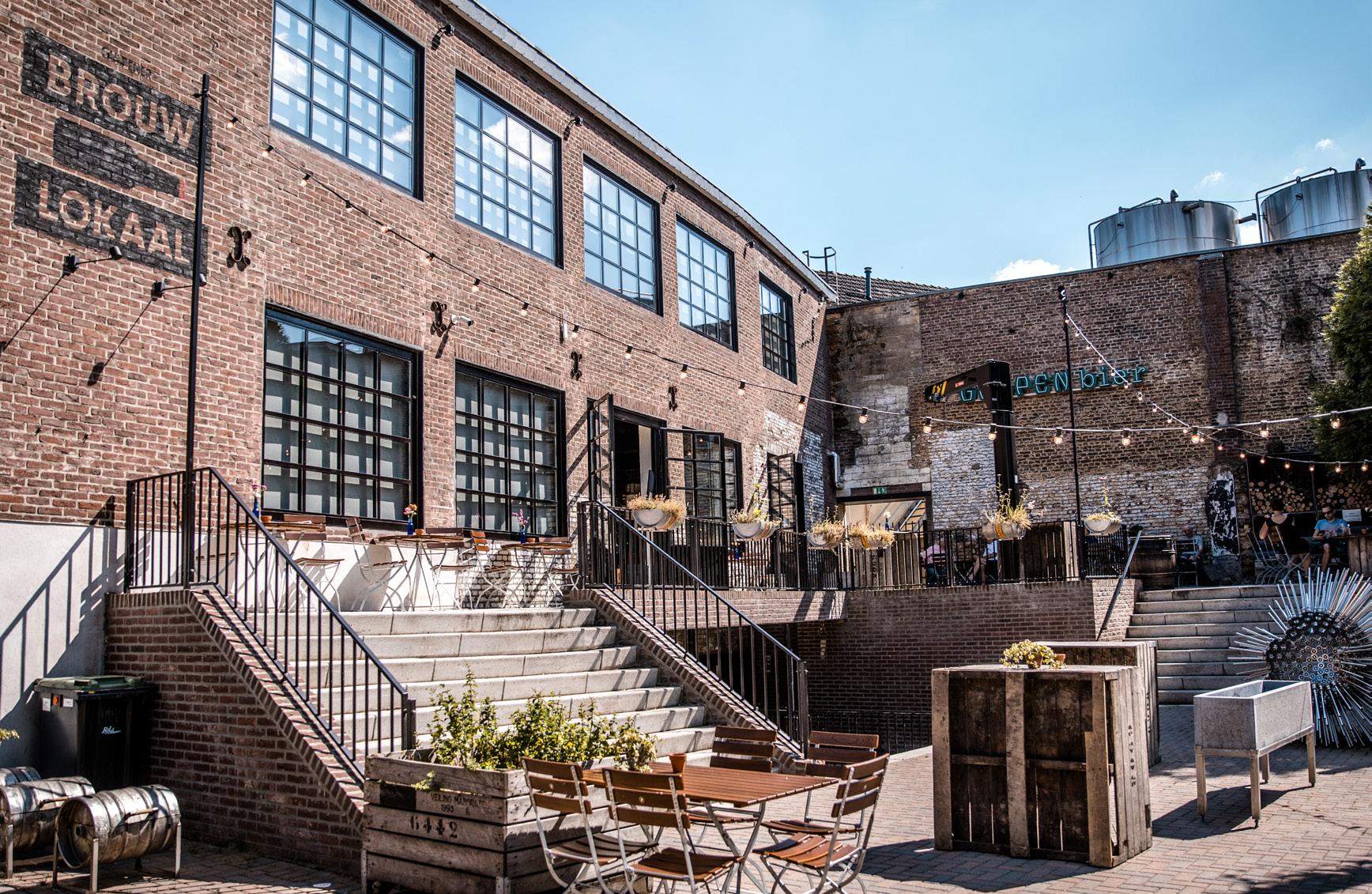
It is about making choices, as you cannot do everything at the same time. Moreover, the technologies I mentioned are quite expensive and many breweries cannot afford them. Although, looking at energy prices now, the return on investment is much quicker. What is important is the willingness to make the change: whilst we cannot save the world alone, we can contribute and show people what is possible. Our success is when other companies copy us. This is why our new brewery is an open-source brewery: everyone can come, visit the brewery, look at the plan and the data and copy us.
Building a brand-new brewery as we did is not possible for the small breweries. However, some small elements can be copied and integrated into the progressive upgrade of a brewery. Heat
and energy recovery can be implemented at a relatively low cost and can reduce the bills. Also, local sourcing can be done easily and does not require a lot of investments, although purchase prices may be higher than those of non-local suppliers. Small breweries have to look at what can be done within their budget and pick their fight: energy, technologies, sourcing. There are plenty of possibilities.
Breweries are companies, and making profit is important, as it also allows for making investments. But you always need to consider the social impact and how positive you can be. Locally sourcing our ingredients, making the brewery open-source means Gulpener chose not to go for the highest profit, but opted for having a positive social impact for the community.
What do you think are the next critical sustainability issues the brewing sector will be faced with? What could you recommend to the smaller breweries?
It is hard to find the best way forward. I consider essential that we, as an industry, keep sustainability high on the agenda despite all the other challenges we are facing at the moment. If this is pushed back in the background, we will lose some opportunities. The current energy crisis forces us to advance. It may be a bad for a good, with the war in Ukraine and its consequences acting as a catalyst: we need to get rid of fossil energy. It has been too easy to simply rely on gas for the last years. The gas prices were the hard drug of the industry. Now we see how painful it is when prices go up. We need to get away from it as soon as possible. When it comes to social sustainability, that is a choice to be made by individual companies.
Kamenitza AD, Molson Coors’ business in Bulgaria, published its first sustainability report, showing company’s strategy on sustainable development and the progress towards it in 2021. The company’s sustainability strategy, called Our Imprint, focu ses on two key areas – PEOPLE and PLANET - and aims to make the footprint the company leaves on the environment as posi tive as possible.
Caring for the planet and protecting its resources are one of the big focus areas of the sustainability agenda of Kamenitza. In 2021, the company reduced the weight of primary and secondary plastic packaging placed on the market by nearly 70 tons compared to 2020. Water is a basic resource for the beer production, and its quality and proper treatment is extre mely important. The company’s brewery in Haskovo uses 5 own water sources and the water used in the production goes through purification and treatment processes, the most impor tant of which is that in the reverse osmosis installation. From the beginning of 2022, the plant of Kamenitza AD in Haskovo purchases only green energy. The company is also committed to supporting local production, as 95% of the malt used to make beer is produced in Bulgaria, 95% of the transport companies it works with are Bulgarian, and over 80% of the packaging mate rials for the products are produced in the country. In connec tion with the saving of natural resources and the innovations that the brewer has introduced, 17% less water was used in the production of 1 hl of beer finished product, 12.5% less electri city and 65% less purchased carbon dioxide for 2021 compa red to 2016.
The company has been implementing in its brewery opera tions the program World Class Supply Chain (WCSC) for seve ral years. Its goal is to create and maintain a sustainable supply value chain through standardization of the processes and elimi nation of the losses. Up until 2021 the company has success fully implemented the program in Packaging Department and in 2021 – in Brewing Department. As a result, the brewery has reported 46% less incidents on the packaging lines in 2021. There is also an increase of 12% of the average working time of the packaging lines between two stops. Important to mention
is also the fact that the various programs, implemented in the factory, has helped in building more capabilities of the brewery employees. The company observes a significant increase of the percentage of resolved by brewery employee incidents on the lines – from 10% in 2019, to 23% in 2020, to 41% in 2021. The other big focus in the sustainability strategy of Kamenitza is the people, who are the driving force and the most important resource of Kamenitza. They are at the center of the company’s success. Kamenitza provides to its people opportunities for development, a motivating and inspiring work environment in which they can find the balance between personal and profes sional life. Social equality, golden rules for safety in daily work and various programs to ensure the well-being of employees are embedded in the established corporate values and culture. The company supports and motivates the desire for personal and professional development of its employees, and in 2021 more than 450 people participated in more than 25 on-site trainings conducted by both external and internal qualified trainers, and all employees of the company passed 35 different online trainings. In addition to employees, in the priority areapeople - of the sustainable development strategy, the company also includes care for consumers, customers, partners, as well as a contribution to society with projects and initiatives, which in the past year have contributed to building a more favorable social environment.
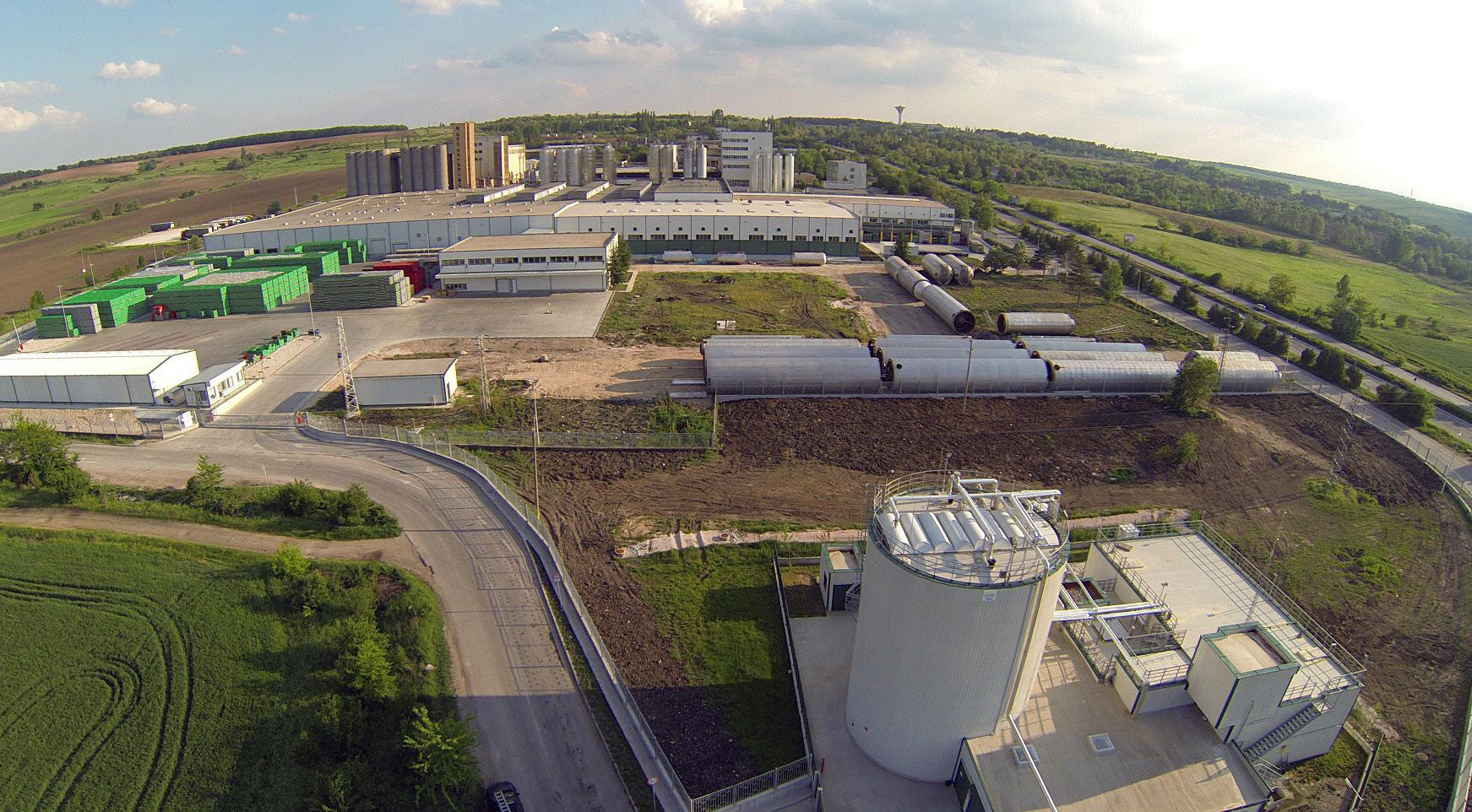
More information about Kamenitza AD sustainability agenda and projects can be found here: https://kamenitzacompany. bg/sites/default/files/2022-10/Kamenitza_Sustainability_ report_2022_A4_online.pdf
More information about Molson Coors sustainability agenda and projects can be found here: https://www.molsoncoors. com/sustainability/sustainability-reporting

Elk jaar komen in Nederland 150 miljoen blikjes in het zwerfaf val terecht. Dat is niet alleen belastend voor mens, natuur en dier, maar brengt ook nog eens hoge opruimkosten met zich mee. Daarom is besloten om het huidige statiegeldsysteem, dat grote en kleine PET-flesjes, bierflessen en kratten beslaat, uit te breiden. Vanaf 2023 zullen ook blikjes onder het statiegeld systeem komen te vallen, in navolging op onder meer Duits land, Finland, Noorwegen en Denemarken. De consument zal per blikje €0,15 statiegeld betalen, zodat de twee miljard blik jes die jaarlijks worden verkocht zoveel mogelijk ingezameld en gerecycled kunnen worden. De overheid beoogt een 70%-90% reductie van blikjes in het zwerfafval en heeft een wettelijke doelstelling vastgelegd om voor eind 2024 een retourpercen tage van 90% te behalen. Elk blikje in het milieu is er natuurlijk één te veel, en brouwers werken dan ook hard samen met andere ketenpartners om een succesvol statiegeldsysteem op te zetten. Complicerend bij het opzetten van het statiegeldsysteem voor blikjes is dat in de wet is vastgelegd dat producenten verantwoordelijk zijn voor het behalen van het inzamelingspercentage, maar dat aan ande ren in de keten geen verplichtingen zijn opgelegd om hieraan mee te werken. Hier zijn echter goede afspraken over gemaakt. Begonnen wordt met inzameling via de supermarkten. Op termijn worden hopelijk ook andere innamepunten zoals tanks tations en treinstations hieraan toegevoegd en daarna volgen mogelijk nog andere locaties zoals sportverenigingen. De brou
Each year, 150 million cans end up as litter in the Netherlands. This is not just harmful to people, the environment and animals, but also results in high clean-up costs. For this reason, the deci sion was made to expand the current deposit return system, which at the moment covers small and large PET bottles, beer bottles and beer crates. From 2023 onwards, beverage cans will also be covered by a deposit return scheme, following develo pments in i.a. Germany, Finland, Norway and Denmark. Consu mers will pay a €0.15 deposit per can, which should contribute to collecting and recycling as many of the two billion cans sold annually as possible. The government is striving for a 70%-90% reduction of cans found in litter and has set a legal target to achieve a 90% return rate by the end of 2024. Of course, every can that ends up in nature is one too many, and brewers are cooperating closely with other supply chain partners to set up a successful deposit system. A complicating factor in setting up the deposit scheme for cans is that produ cers are legally responsible for achieving the collection targets, but no legal obligations are imposed on other actors along the chain. However, the sector has made good agreements about designated return points. The first step in the implementation will be collection through return vending machines at super markets. In time, other return points such as gas stations and train stations will be added and at a later date other locations, such as sports clubs, may also follow. The brewers are working hard to make the new system consumer-friendly and future -proof, so that consumers can get used to it as quickly as possi ble and the cans end up in the right place.
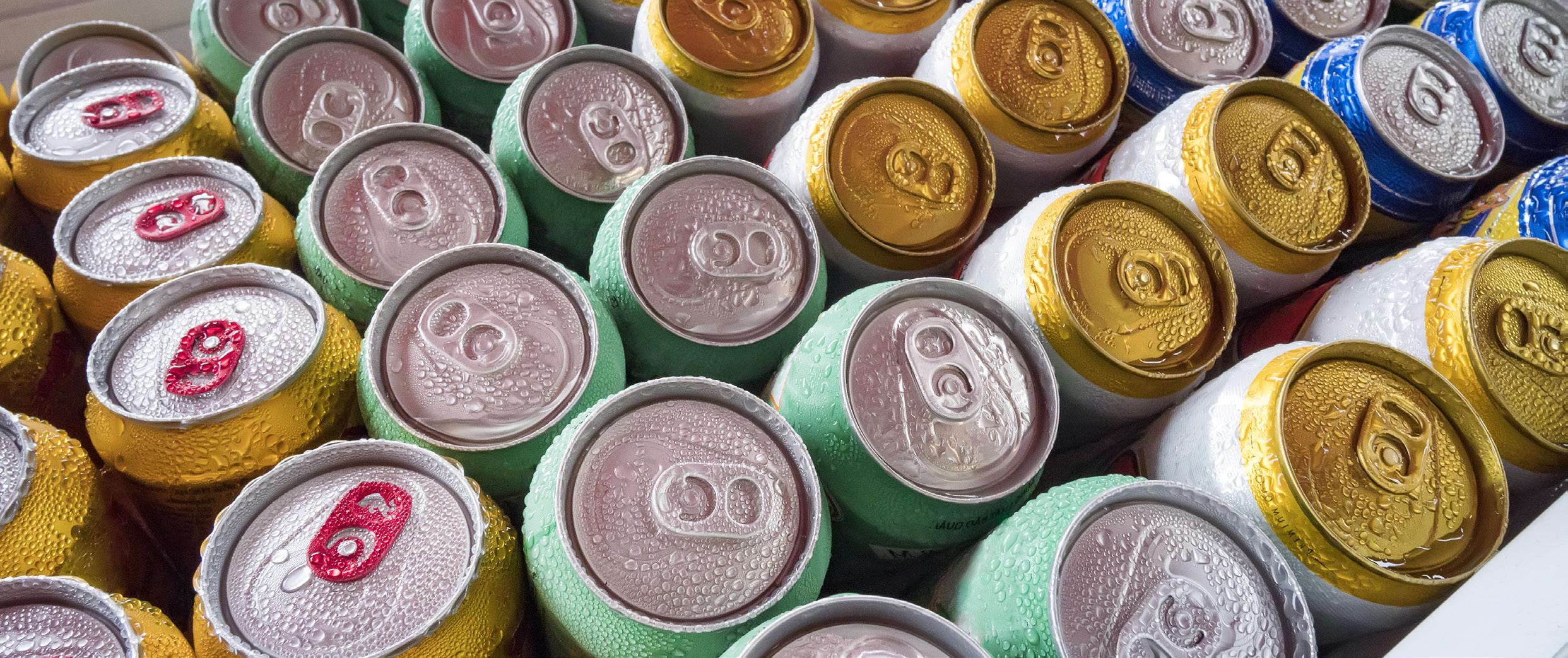
Diversity and inclusion are fundamental to helping any organisation and sector meet their ambitions, to understand the needs and expectations of consumers and to effectively meet them. This applies to the brewing sector and to the entire beer value chain.
The brewing sector wants to become an inclusive sector where everyone – its companies, trade associations, employees and value chain partners – feels welcome and able to join the strategic ambitions of the sector with regard to diversity and inclusion.I

Bergenbier S.A., part of the Molson Coors Beverage Company group, one of the most important companies on the beer market in Romania, launched this year the CSR platform “Friends know to be responsible”, an extensive project that is part of the long -term commitment of the company to get involved in the achie vement of the global objectives “Our Beer Imprint 2025”. The platform prieteniresponsabili.ro includes the social responsibi lity actions initiated by Bergenbier, as well as the latest editions of the Sustainability Report that highlight the economic and social footprint, on three major pillars: people, the environment and responsible consumption of alcohol. Through “Friends know how to be responsible”, Bergenbier is going to launch in the next period new partnerships and campaigns that conti nue the road to sustainability. Social responsibility is one of the central values of the company, and every year Bergenbier initia tes complex projects aimed at bringing added value to society, dedicating itself to actions related to the environment, respon sible drinking, and community.
Along with the “Friends Know to be Responsible” platform, Bergenbier also launched the third edition of the Sustainabi lity Report for 2021. With a turnover of 716 million lei and an average of 677 employees, Bergenbier offers opportunities for growth and development to all employees, through internal and external training. Thus, only last year, 62 training sessions were delivered, through which 42 people were promoted. In addition, the social responsibility programs bear the mark of full involvement, with more and more employees becoming volunteers in the initiatives and projects developed by Bergen bier.
In terms of care for the environment and the degree of invol vement in sustainability projects, Bergenbier is getting closer to meeting its goals, with the recovery process through recy
cling being 100%. In addition, since 2019 Bergenbier has not sent any household waste to landfill, and since this year, the entire amount of electricity purchased and used in the Bergen bier’s Brewery is 100% green energy.
Bergenbier S.A., parte a grupului Molson Coors Beverage Company, una dintre cele mai importante companii de pe piața berii din România, a lansat anul acesta platforma campaniei de CSR „Prietenii știu să fie responsabili”, un proiect amplu care face parte din angajamentul pe termen lung al companiei de a se implica în realizarea obiectivelor globale ”Our Beer Imprint 2025”. Platforma prieteniresponsabili.ro cuprinde acțiunile de responsabilitate socială inițiate de Bergenbier, precum și ulti mele ediții ale Raportului de Sustenabilitate, care evidențiază amprenta economică și socială, pe trei mari piloni: oamenii, mediul înconjurător și consumul responsabil de alcool Prin „Prietenii știu să fie responsabili”, Bergenbier urmează să lanseze în perioada următoare noi parteneriate și campanii care continuă drumul către sustenabilitate. Responsabilitatea socială este una dintre valorile centrale ale companiei, iar an de an Bergenbier inițiază proiecte complexe menite să aducă plus valoare societății, dedicându-se acțiunilor care țin de mediul înconjurător, consum responsabil și comunitate. Odată cu platforma „Prietenii Știu să fie Responsabili”, Bergen bier a lansat și a treia ediție a Raportului de Sustenabilitate pentru anul 2021. Cu o cifră de afaceri de 716 milioane lei și o medie de 677 de angajați, Bergenbier oferă oportunități de creștere și dezvoltare tuturor angajaților, prin pregătire internă și externă. Astfel, doar anul trecut au fost livrate 62 de sesiuni de training, prin intermediul cărora au fost promovate 42 de persoane. În plus, programele de responsabilitate socială poartă amprenta implicării depline, tot mai mulți angajați deve nind voluntari în inițiativele și proiectele dezvoltate de Bergen bier. În ceea ce privește grija pentru mediul înconjurător și gradul de implicare în proiectele de sustenabilitate, Bergenbier este tot mai aproape de îndeplinirea obiectivelor, procesul de valorifi care prin reciclare fiind de 100%. În plus, din 2019 compania nu a mai trimis la goapa de gunoi niciun fel de deșeu menajer, iar din acest an, întreaga cantitate de electricitate achiziționată și folosită în Fabrica Bergenbier este 100% energie verde.
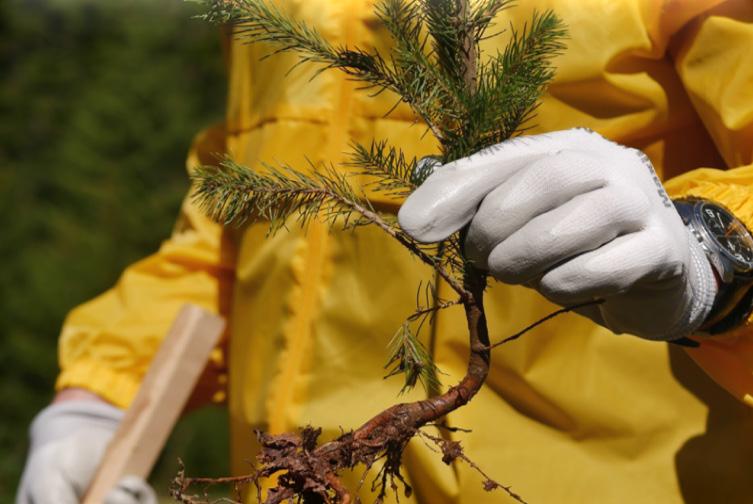
The sustainability component became part of the business stra tegy of the Bergenbier company, when five years ago it laun ched the first reforestation initiative in Romania supported by a beer producer. This year, in addition to the cleaning campaigns, Bergenbier, a brand with tradition in Romania, which is cons tantly involved in the life of communities by developing CSR campaigns oriented towards the environment and responsible consumption, has chosen to express its concern for the envi ronment through a unique campaign – Ovidiu Fir Day - which continues the story “You cool off and reforest”, through which more than 150,000 fir saplings were planted.
“Ziua Bradului Ovidiu” (Ovidiu Fir Day), launched by the brand, creates a bridge between the everyday story of those who enjoy the taste of Bergenbier beer and the isolated fir that needs the help of friends. Thus, the campaign manages to bring the Bergenbier beer consumer not only closer to friends, but also closer to the environment. Bergen bier communication focused on the values of friendship crea tes memorable events and experiences around them, while at the same time taking forward the initiative of planting fir trees. Thus, with the support of partner associations, “Ziua Bradului Ovidiu” contributes to the planting of 15,000 saplings. The first plantation step from the campaign takes place this month, with 6,000 firs joining Ovidiu, the symbol of friendship and responsi bility for Bergenbier brand.
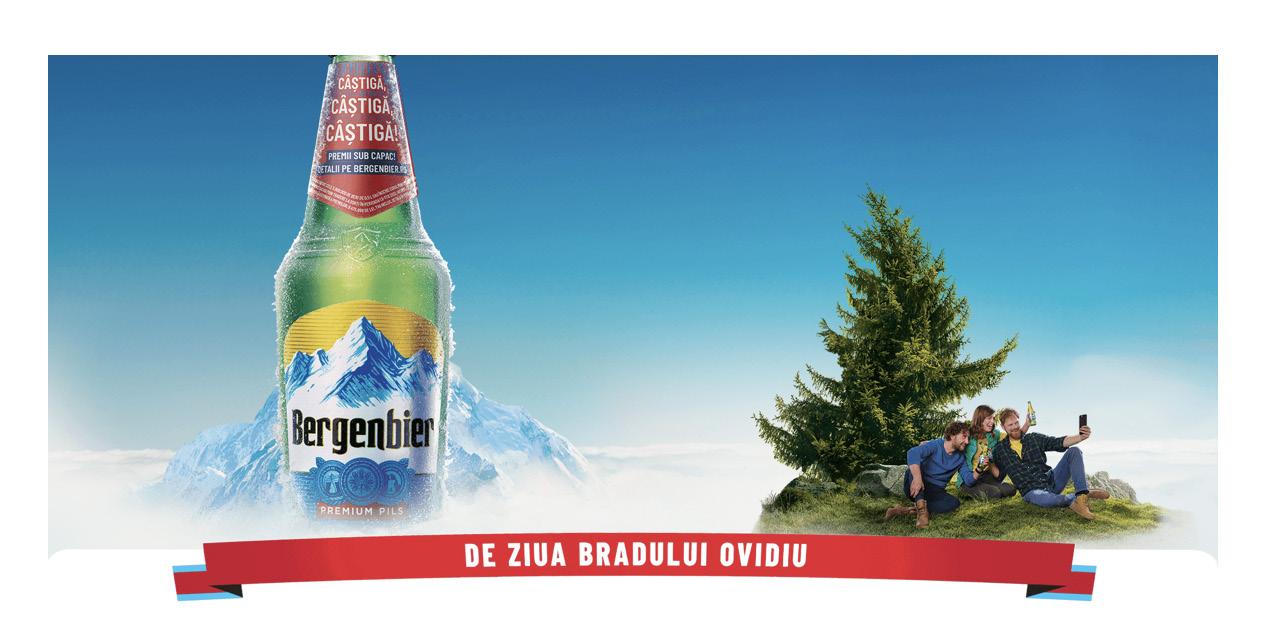
Componenta de sustenabilitate a devenit parte din strategia de business a companiei Bergenbier, când în urmă cu cinci ani, a dat startul primei inițiative de reîmpădurire a Româ niei, susținută de un producător de bere. Anul acesta, adițio nal campaniilor de ecologizare, Bergenbier, un brand cu tradiție în România, care se implică constant în viața comunităților, prin dezvoltarea campaniilor de CSR orientate către mediu și consum responsabil, a ales să își exprime grija față de mediu printr-o campanie inedită – Ziua Bradului Ovidiu – care conti nuă povestea „Te răcorești și reîmpădurești”, prin care au fost plantați peste 150.000 de puieți de brad. „Ziua Bradului Ovidiu”, lansată de brand, a creat o punte între povestea cotidiană a celor ce se bucură de gustul berii Bergen bier și a bradului aflat în izolare, care are nevoie de ajutorul prietenilor. Astfel, campania a reușit să aducă consumato rul de bere Bergenbier nu doar mai aproape de prieteni, dar și mai aproape de mediul înconjurător. Comunicarea Bergen bier, axată pe valorile prieteniei, creează în jurul acestora eveni mente și experiențe memorabile, ducând, în același timp, mai departe inițiativa plantării puieților de brad. Astfel, cu sprijinul asociațiilor partenere, „Ziua Bradului Ovidiu” contribuie la plan tarea a 15.000 de puieți. Prima rundă de plantare se desfășoară luna aceasta, 6.000 de brazi alăturându-se lui Ovidiu, simbolul central al prieteniei și responsabilității pentru Bergenbier.

One of the most important principles of Bergenbier is to be a trusted partner of civil society and offer consumers cons tant support, for a sustainable environment, and supporting the ExtravaCANza campaign, initiated by the Alurco Associa tion, through the Every Can Counts program, is a step forward towards encouraging the efficient use of natural resources, throughout the beer production chain, minimizing the effect on the environment. The Every Can Counts program, which has already become a tradition on the Romanian coast, is dedica ted to the selective collection of aluminum cans, with the aim of encouraging recycling outside the home as well - at work, during public events or on vacation.
For five years, Bergenbier is already a traditional partner of the ExtravaCANza campaign and supports the Alucro Association in the caravan dedicated to the collection of aluminum cans and plastic bottles in Tulcea, Iasi, Suceava, Bacău, Sibiu, Oradea, Turda, Târgu Mureş, Constanţa and Bucharest, contributing at the same time, and keeping beaches clean, by facilitating the recycling of aluminum cans consumed during the summer. This year the campaign took place between July 7th and August 22nd, in the Costinești resort and offered tourists the opportu nity to recycle aluminum packaging in a machine dedicated to recycling cans. In exchange for the cans collected, the campaign participants enjoyed prizes – cans of beer, juice or mixes of beer and juice, but also shopping vouchers. In total, through the involvement of tourists, 31,400 aluminum cans (equivalent to 400 kilograms of waste) were collected.
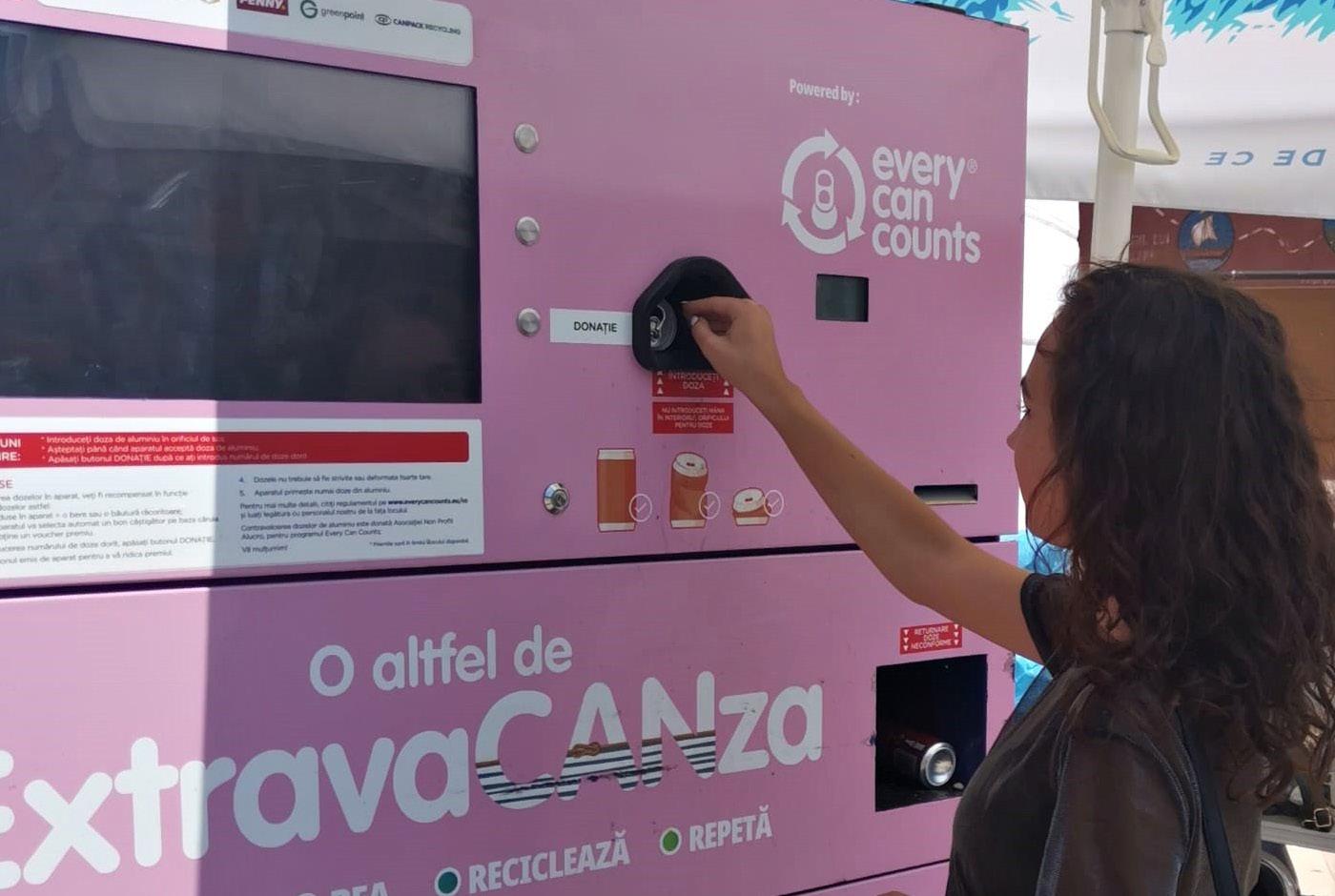

Unul dintre cele mai importante principii pentru Bergenbier este să fie un partener de încredere al societății civile și să ofere consumatorilor sprijin constant, pentru un mediu sustenabil, iar susținerea campaniei ExtravaCANza, inițiată de Asociația Alurco, prin programul Every Can Counts, este un pas înainte către încurajarea utilizării eficiente a resurselor naturale, pe tot lanțul producției de bere, minimizând efectul asupra mediu lui înconjurător. Programul Every Can Counts, devenit deja o tradiție pe litoralul românesc, este dedicat colectării selective a dozelor de aluminiu, cu scopul de a încuraja reciclarea și în afara casei - la locul de muncă, în cadrul evenimentelor publice sau în vacanță. De cinci ani, Bergenbier este deja un partener tradițional al campaniei ExtravaCANza și sprijină Asociaţia Alucro în caravana dedicată colectării dozelor din aluminiu şi sticlelor din plastic în Tulcea, Iaşi, Suceava, Bacău, Sibiu, Oradea, Turda, Târgu Mureş, Constanţa şi Bucureşti, contribuind, în același timp, și la păstra rea unor plaje curate, prin facilitarea reciclării dozelor de alumi niu consumate în perioada verii. În acest an, campania s-a derulat în perioada 7 iulie – 22 august, în stațiunea Costinești și le-a oferit turiștilor posibilitatea de a recicla ambalajele de aluminiu într-un aparat dedicat reciclării dozelor. În schimbul acestora, participanții la campanie s-au bucurat de premii – doze de bere, suc sau mixuri de bere și suc, dar și vouchere de cumpărături. În total, prin implicarea turiști lor, au fost colectate 31.400 de doze de aluminiu, echivalentul a 400 de kilograme de deșeuri.
Each September, Bergenbier colleagues from Romania are involved in social responsibility actions and, just like last year, last month the employees helped clean two areas in Bucharest and Ploiești.
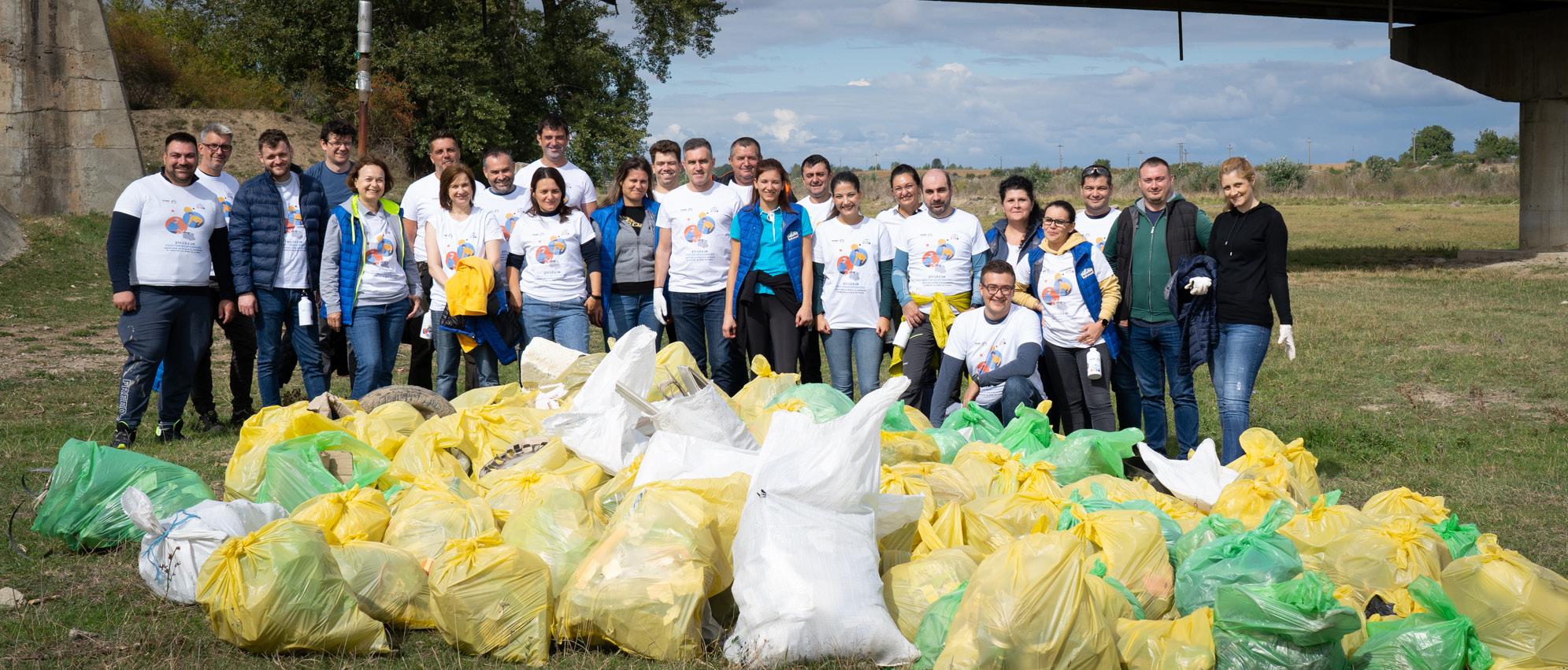
This year, under the umbrella of the “Friends know to be responsible” campaign and together with More than Green Assocciation Bergenbier organized the greening and cleaning campaign “Friends of the Environment” in the Colentina river area and in Ploiești, near the factory. Together with a team of involved volunteers, more than 150 bags of waste were collec ted, and the Mogoșoaia lake area and the Prahova riverbank were cleaned, thus preventing waste from reaching the water.
The first cleaning action organized by Bergenbier took place last year through the “Autumn counts friends” campaign, where together with Let’s do it Romania, greening and cleaning actions were carried out in the Moara Vlăsiei area and around the Bergenbier factory in Ploiești. The Bergenbier volunteers mana ged to collect over 100 bags, thus contributing to the beautifica tion of the area and the recycling of rubbish, waste and plastic.
În luna septembrie, colegii Bergenbier din România se implică în acțiuni de responsabilitate socială și, la fel ca anul trecut, angajații au ecologizat două zone din București și Ploiești. Anul acesta, sub umbrela campaniei „Prietenii știu să fie responsabili” și împreună cu Asociația Mai Mult Verde, Bergen bier a organizat campania de ecologizare și curățenie „Priete nii Mediului” în zona râului Colentina și în Ploiești, în apropie rea fabricii. Împreună cu o echipă de voluntari implicați, au fost strânși peste 150 de saci cu deșeuri, iar zona lacului Mogoșoaia și malul râului Prahova au fost curățate, evitând astfel ca deșeu rile să ajungă în apă.
Prima acțiune de ecologizare organizată a avut loc anul trecut, prin campania „Toamna se numără prietenii”, unde, alături de Let`s do it Romania, au fost desfășurate acțiuni de ecologizare și curățenie în zona Moara Vlăsiei și în jurul fabricii Bergenbier de la Ploiești. Voluntarii Bergenbier au reușit să strângă peste 100 de saci, contribuind astfel la înfrumusețarea zonei și la reci clarea gunoaielor, deșeurilor și plasticului.
 BY THE EDITOR
BY THE EDITOR
ON THE 28TH OF OCTOBER (COINCIDENTALLY?) 2022, “OKTOBERFESTBIER” WAS REGISTERED AS A PROTECTED GEOGRAPHICAL INDICATION, JOINING THE SMALL GROUP OF BEER TYPES BENEFITING FROM A GEOGRAPHICAL INDICATION IN EUROPE AND FINALISING A PROCESS STARTED 10 YEARS AGO.
Geographical Indications are regulated at European level by Regulation (EU) No 1151/2012 on quality schemes for agricul tural products and foodstuffs. Geographical indication are defi ned as products originating in a specific place, region or coun try; whose given quality, reputation or other characteristic is essentially attributable to its geographical origin; and for which at least one of the production steps has taken place in the defi ned geographical area. To be registered as a Protected Geogra phical Indication, an application has to be introduced meeting criteria laid down in the above-mentioned regulation. The Euro pean Commission then reviews the application and, if accep ted, published it on the Official Journal of the European Union (which it did for Oktoberfestbier on the 28th of October 1). The status of protected geographical indication offers protection against any misuse, imitation or evocation of the registered name. Concretely speaking, only beers brewed in full respect of the criteria laid down in the registration for Oktoberfestbier can be labelled under (or can use, in their advertising or commu nication) the designation “Oktoberfestbier”. Products making references such as “Oktobersfestbier-style” (or similar names) in their labelling or presentation cannot be marketed legally.
The criteria for the use of the designation “Oktoberfestbier” can be found on the eAmbrosia, the EU register for Geogra phical Indications 2. Oktoberfestbier is described as “a bottom -fermented beer with light, golden, amber colours or dark, ranging from full-bodied, very mellow, smooth or malty aroma through to slightly hopped with a very mild bitterness or a powerful, slightly sweet taste”. The original gravity (in %) must range from 13,6 to 14,0, the alcohol content (in % vol.) between 5,3 and 6,6 %, the EBC colour between 6 and 28 and the IBU between 16 and 28. The beer must be brewed according to the Munich Purity Law of 1487. The ingredients must be barley malt, hops, yeast and water, which must come from tertiary layers of the gravel plain in the City of Munich area. The deep wells from which the water is currently drawn reach depths of 140-250 m, depending on the site. The registration states that the Munich municipal water does not fulfil these water requirements. The registra tion also states that the entire process, including malting, must take place on the territory of the City of Munich. The process shall end after a 4- to 11-week storage period, during which the ‘green’ beer is naturally enriched with carbonic acid and matu res until reaching its full flavour.

1 https://eur-lex.europa.eu/legal-content/EN/TXT/?uri=CELE
X:32022R2075&pk_campaign=todays_OJ&pk_source=EURLEX&pk_ medium=TW&pk_keyword=PDO%20PGI&pk_content=Regulation%20
2 https://ec.europa.eu/info/food-farming-fisheries/food-safety-and -quality/certification/quality-labels/geographical-indications-register/ details/EUGI00000017016
• Protected Denomination of Origin: Znojemské pivo (Czech Republic)
• Protected Geographical Indication: Brněnské pivo, Březnický ležák, Budějovické pivo, Budějovický měšťanský var, Černá Hora, České pivo, Českobudě jovické pivo, Chodské pivo, Starobrněnské pivo , Zno jemské pivo (Czech Republic), Bayerisches Bier, Bremer Bier, Dortmunder Bier, Hofer Bier, Kölsch, Kulmbacher Bier, Mainfranken Bier, Münchener Bier, Reuther Bier (Germany), Kaimiškas Jovarų alus (Lithuania). The Brit ish Kentish ale, Kentish strong ale and Rutland Bitter are also covered as they benefited from a PGI before Brexit.

The book landed on my desk with a heavy thud. It is over 640 pages and hard-cover, so it presents itself as what is claimed to be the most comprehensive and beautifully illustrated compen dium discussing the use of a wide variety of plants in brewing.
The author, Giuseppe Caruso, has collated accurate scientific descriptions of over 500 plants, replete with lots of information about each plant’s application in beer making, its toxicity (if any) and including a short list of beer styles. The book represents a translation from the original Italian.
Upon further reading, one gets the impression that the author has been guided mainly by the principle that many, if not most, plants could be used in the brewing of beer, but whether these would contribute favourably to flavour or extract he often leaves unmentioned. The focus is on a list of which plants could be used in brewing, rather than what is being used or what has actually been documented for commercial brewing in the past, though the reference section is impressive and shows that the author is very well aware of the use of such plants in the brewing literature and in academic research. In this aspect, his knowledge and enthusiasm are an obvious asset.
To my mind, the recommended beer style guides that accom panies each plant’s description seems a bit arbitrary, as there are no explanations as to practical brewing advice. Learning about descriptors imparting what kind of flavour notes, about ease or difficulty of gelatinisation or indeed, mash separa tion or filterability, and other technological factors to consi der, would have been helpful to those wishing to emulate the experience. Perhaps all those plants could have been grouped into two broad divisions right at the start; those that are used for delivering fermentable extract, and those that are primarily used as flavourants in terms of resin, spice, herbaceous sensa tions, or fruitiness.
To summarise, this is undoubtedly a carefully researched book of great botanical value; the comment I would make is that it’s more a botanical reference work, rather than a hands-on book a practical brewer would pick up to explore the multifaceted world of brewing with alternative ingredients.
The Botany of Beer – An illustrated Guide to More Than 500 Plants Used in Brewing
Author: Giuseppe Caruso (Foreword by Marika Josephson) 640 pages; Columbia University Press / New York. ISBN 978-0-231-20158-2
The brewing industry in Poland has witnessed a number of excise duty hikes in barely two years. The first increase by 10 per cent from PLN 7.79 to PLN 8.57 was introduced in early 2020, while the next one - also by 10 per cent - became effec tive on 1 January 2022. Amendment of the act on the excise duty provides for a further excise duty increase by 5 per cent each year until 2027. As a result, excise duty will rise to PLN 12.04 for each degree Plato, which translates into a 50 per cent hike in just 6 years. Such dramatic pace of increases is destabi lising the sector and its value chain.
Combined with higher productions costs and a drop in consumption, these circumstances are taking their toll on the sentiment in the brewing sector, what has been confirmed by findings of the survey “Brewer’s Barometer” rolled out in July and August 2022 by Agencja Badań Rynku i Opinii SW Research on commission of ZPPP Polish Breweries.
The survey was conducted on a sample of 64 breweries (out of 363 operating on the Polish market) of which 90 per cent are medium-sized and small entities. As many as 94 per cent of surveyed companies have assessed that the conditions for doing business have deteriorated, even compared to the period of pandemic lockdown, while one in four breweries (26.6 per cent) has declared it is contemplating shutting down its opera tions.
Although pandemic restrictions have been lifted, sales of beer whose consumption patterns are related to social gatherings, major events and the hospitality sector fails to increase. This is reflected by craft beers, which are the staple of the pub, bar, and restaurant menu. Their growth rate has visibly slowed down, reversing the beer revolution in Poland by many years. In terms of the overall market, in 2020 the level of beer consump tion reached the lowest point in a decade (93.6 litres per inha bitant), while in 2021 beer volume shrunk by further 4 per cent. Other problems highlighted by producers have also been exacerbated in the post-pandemic reality. While listing key barriers to doing business, respondents mention the growing cost of fuel (more than 95 per cent), energy and raw materials (97 per cent of indications), availability of raw materials (62.3
per cent) and higher tax burden (54.1 per cent). Entrepreneurs who took part in the survey project that the spike in costs and problems with availability may translate into further decline in sales, halt investments and reduce employment. Findings of the survey reveal that more than one in four breweries (28 per cent) want to withdraw from planned investments, nearly a half (45.3 per cent) do not plan to increase the employment level, while a considerable part (23.4 per cent) will reduce itthis most painful aspect of the market slump has so far been avoided.
Brewers see prospects for reducing the fallout of the current crisis and the return to normality in reduction of the tax burden - halting excise duty hikes for two years and reducing VAT on beer in the hospitality sector are key demands advocated by entrepreneurs from the brewing industry. Among expected support measures, respondents have also mentioned reduc tion of the corporate income tax (43.8 per cent), prospects for claiming duty credit on unsold beer (26.6 per cent) and reduc tion of other charges.
ZPPP Browary Polskie
Branża piwowarska w Polsce doświadczyła kilku podwyżek podatku akcyzowego, w okresie zaledwie dwóch lat. Pierwsza – o 10 proc., z 7,79 zł na 8,57 zł – nastąpiła z początkiem 2020 r., a kolejna – również o 10 proc. – weszła w życie 1 stycznia 2022 r. Nowelizacja ustawy o podatku akcyzowym przewiduje dalszy wzrost tego podatku o 5 proc. każdego roku, aż do 2027 r. W wyniku tego akcyza wzrośnie do poziomu 12,04 zł za każdy stopień plato, co oznacza 40-procentową podwyżkę w ciągu zaledwie 6 lat. Tak drastyczne tempo podwyżek destabilizuje branżę i jej łańcuch wartości. Okoliczności te, w połączeniu ze wzrostem kosztów produk
cji i spadkiem konsumpcji, powodują pogorszenie nastrojów branży piwowarskiej, co potwierdzają wyniki badania pn. „Baro metr piwowara”, zrealizowanego w lipcu i sierpniu 2022 roku przez Agencję Badań Rynku i Opinii SW Research, na zlecenie ZPPP Browary Polskie. W badaniu wzięły udział 64 browary (spośród 363 na polskim rynku), z których 90 proc. stanowiły średnie i małe podmioty. Aż 94 proc. ankietowanych firm oceniło, że warunki prowadze nia działalności gospodarczej pogorszyły się, nawet w porów naniu do okresu lockdownów związanych z pandemią, a jedna czwarta browarów (26,6 proc.) zadeklarowała, że bierze pod uwagę zamknięcie działalności. Piwo, którego wzorce konsumpcji są powiązane ze spotkaniami towarzyskimi, dużymi eventami i branżą gastronomiczną, mimo zniesienia pandemicznych restrykcji nie notuje wzrostów sprze daży. Jest to widoczne choćby w przypadku piw rzemieślniczych, najchętniej pitych właśnie w pubach, barach i restauracjach, a których tempo rozwoju zdecydowanie spadło, cofając rewolu cję piwną w Polsce o wiele lat. W skali całego rynku, poziom konsumpcji piwa osiągnął w 2020 r. wartość najniższą od 10 lat (93,6 litra na jednego mieszkańca), a w 2021 r. wolumen piwa skurczył się o kolejne 4 proc. W postpandemicznej rzeczywistości nasiliły się też inne problemy, na które zwracają uwagę producenci. Wśród głównych utrudnień w prowadzeniu biznesu, wymieniają te związane z rosnącymi kosztami paliw (ponad 95 proc.), ener gii oraz surowców (97 proc. wskazań), dostępnością surowców (62,3 proc.) oraz zwiększeniem obciążeń podatkowych (54,1 proc.). Przedsiębiorcy, którzy wzięli udział w badaniu, przewi dują, że wzrost kosztów i problemy z dostępnością mogą się przełożyć się na dalszy spadek sprzedaży, a także na wstrzyma nie inwestycji i redukcję zatrudnienia. Wyniki badania pokazują, że więcej niż co czwarty browar (28 proc.) zamierza zrezyg nować z planowanych inwestycji, niemal połowa (45,3 proc.) nie planuje zwiększenia zatrudnienia, a znacząca część (23,4 proc.) je zmniejszy – tego ostatniego, najbardziej bolesnego aspektu załamania rynku, do tej pory udawało się uniknąć. Browarnicy szansę na ograniczenie skutków obecnego kryzysu i powrót do normalności widzą w zmniejszeniu obciążeń poda tkowych – wstrzymanie podwyżek akcyzy na 2 lata i obniże nie VAT w gastronomii dla piwa są głównymi postulatami dotyczącymi wsparcia przedsiębiorców z sektora piwowar skiego. Wśród oczekiwanych działań pomocowych respondenci wymieniali też: obniżenie CIT dla przedsiębiorców (43,8 proc.), możliwość odbioru akcyzy za niesprzedane piwo (26,6 proc.), a także zmniejszenie innych opłat.

voluntary commitments to transparency and accountability to consumers, and the challenges posed by the war in Ukraine. To the greatest extent, brewing companies have problems with high gas and electricity prices, as well as delays in the frequency of deliveries of raw materials.
The beer sector has strong potential to boost Europe’s recovery after the two-year covid crisis. The recent growth that is registe red helps more than half of the closed jobs to be resumed and generates an additional 4 billion euros of revenue for the natio nal budgets of the member states of the European Union. This became clear at the meeting of The Brewers of Europe, which was being held for the first time in our country. With the onset of autumn, Sofia became the capital of the beer indus try . The Union of Brewers in Bulgaria (SPB) hosted the internal meetings of the sector from 10 to 13 October with a series of meetings and events that brought together high-ranking repre sentatives of the industry. The Brewers of Europe organiza tion unites the national associations of beer producers from 29 European countries. The Sofia meeting was attended by repre sentatives of 20 countries from the Old Continent , as well as the five largest multinational brewing companies.
The main topics discussed at the meetings related to a review of the sector’s economic performance, progress on the industry’s
Pierre-Olivier Bergeron, Secretary General of The Brewers of Europe in an interview on the Bulgarian National TV commen ted about the shortage of carbon dioxide (CO2) due to the energy crisis and the reduction of production in some impor tant fertilizer factories in Europe, is a stress for a number of breweries: “We, along with other sectors in the food industry, are appealing for support from governments to ensure that this shortage is overcome. An increase in the price of energy for agriculture also increases the costs of suppliers and this can put pressure on the commodity market.’’ However, he shared his view that brewers will do everything they can to keep their customers.
’In recent years, one of the most important innovations in the industry - the segment of non-alcoholic beers - has been expanding. It is interesting that even the official statis tics of Eurostat already divides the produced volumes of beer into alcoholic and non-alcoholic”. In 2021 in the EU countries, their volume already exceeded 17 million hectoli ters (1.7 billion liters). In Bulgaria, this type of beer also has dynamic development. “Now, more than 15 assortments of non-alcoholic beers are regular produced in Bulgaria”, added Ivana Radomirova, executive director of UBB.
In this regard Mr. Bergeron emphasized that the increased choice and diversity remains the biggest trend in the industry, which is unsurprising when there are over ten thousand brewe ries and they are innovating often with different beer styles, seasonal brands and responding to a renaissance in consu mer interest in the beer category. Non-alcohol beer is perhaps the biggest of those trends – from a very low percentage of the beer market in most countries, in many cases it is now closer to five percent of the beer market and continuing to grow. It grew even during Covid times and is forecast to continue growing. At the Sofia event the brewers reported further progress on their voluntary self-regulation commitment on the beer labe ling to put a list of ingredients and the energy value of the products. Over 90% of beer cans and bottles produced in the EU already have this data, which is highly appreciated by both the European Commission and consumers.
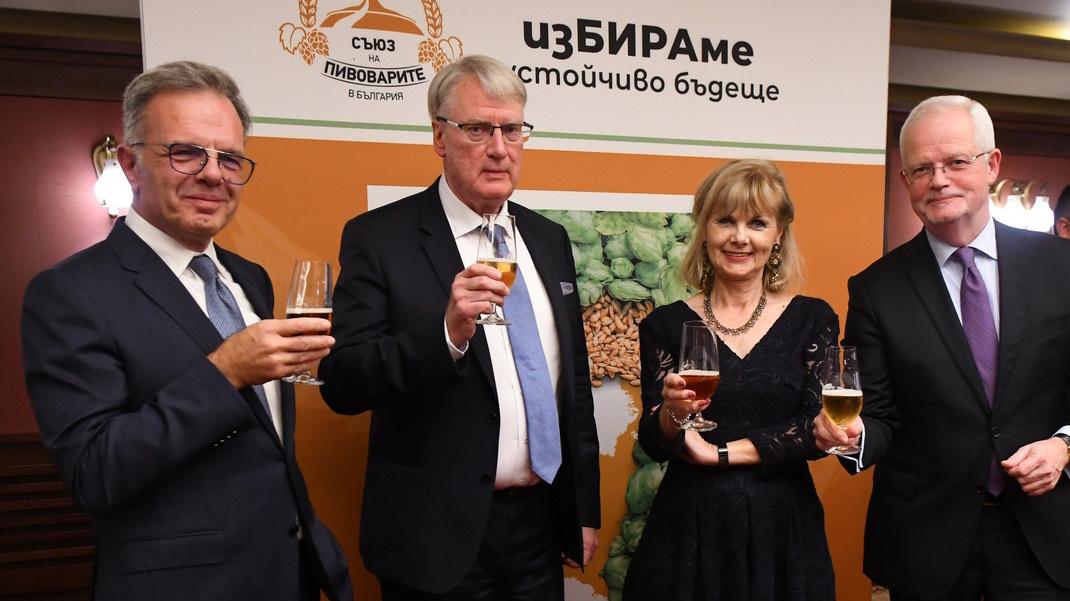
Zagrebačka pivovara, the leading beer producer in Croatia and a member of the Molson Coors group, is celebrating its 130th birthday in 2022. As an innovator in the beer and non-beer segment, the company marked 130 years of its existence by presenting valuable investments, launching a new product on the market and celebrating with loyal consumers, partners and employees.
In order to meet the constantly growing demand for canned beer in the market, further increase the company’s sustainabi lity and the competitiveness of domestic production, as well as to offer consumers new formats and multipacks of cans, Zagre bačka pivovara carried out a large cycle of investments in the modernization of production and the expansion of production and storage capacities. In June, an investment of HRK 64 million was made in the production facility, where a new technolo gically advanced line for filling and packing cans was added. By introducing state-of-the-art technology, energy consump tion and the company’s carbon footprint on the environment are significantly reduced. The investment was presented at a formal gathering in Zagreb, and the guests, including the mayor of Zagreb, the deputy mayor, the ambassadors of Canada and the Czech Republic, and the head of the American mission in Croatia, had the opportunity to have a tour of the new facility. During the summer, Zagrebačka pivovara also completed an investment of almost HRK 18 million in its Logistics, distribu tion and commercial center in Zaprešić. With this investment, the logistics areas and covered storage areas as well as the truck terminal were expanded, which will ensure a safer and easier flow of traffic. Additional storage areas, which are neces sary due to the increased production capacity and new product range, have also been secured. This year Ožujsko pivo, the most popular brand of Zagrebačka pivovara, is also celebrating its 130th birthday, so Žuja, the only Croatian beer with a nickname, launched Ožujsko Legendarno, a special three-malt beer with a rich taste with notes of caramel malt and a striking golden-copper color, made with the addi
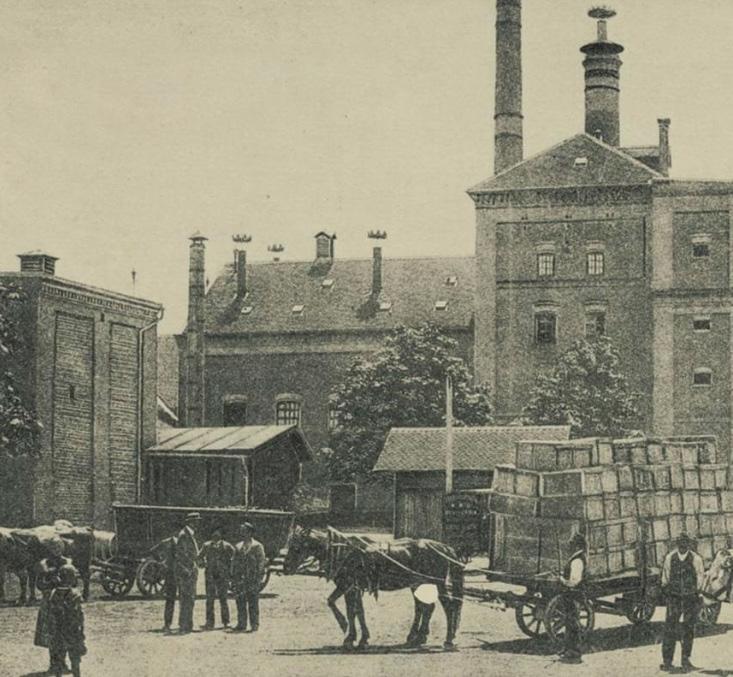
tion of selected varieties of noble hops, which makes it unique on the market. The new beer embodies tradition, innovation and uncompromising quality, which has been nurtured in the production of Ožujsko for more than a century. The birthday was also celebrated by a special Žuja Roadshow - free concerts for all citizens throughout Croatia. This celebration gathered more than 30,000 visitors in nine cities for a total of 30 perfor mances by some of the most popular Croatian bands. Žuja’s guests and colleagues enjoyed exciting performances, excellent food and their favorite beer. A big thank you to everyone who celebrated with us!

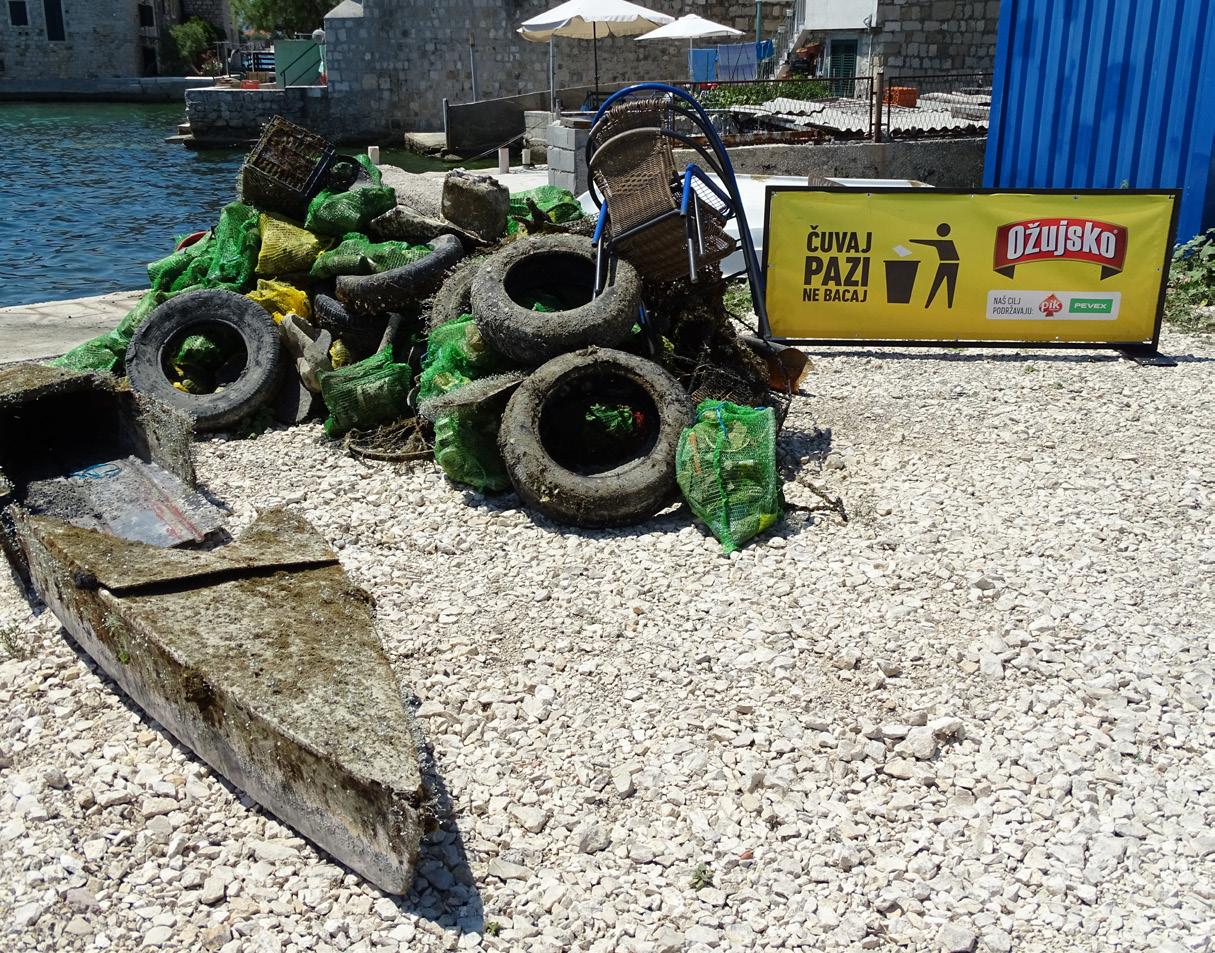 BY ZAGREBAČKA PIVOVARA
By Diana Jokic
BY ZAGREBAČKA PIVOVARA
By Diana Jokic
Illegal landfills in Croatia are a big problem. According to offi cial data, about 250 new wild landfills are registered annually. In order to draw the public’s attention to the problem of illegal waste disposal sites and preserve nature, in 2021 Ožujska pivo joined forces with local environmental associations and clubs and launched the campaign “Take care, don`t throw it away” to organize a series of landfill cleaning actions throughout Croatia. In the first year, more than 300 volunteers participated in the actions, and more than 15 tons of improperly disposed waste
the 15th GrandPRix competition of the Croatian Association for Public Relations, where awards are given to the best communi cation projects, the campaign was declared the best in its cate gory. The “Take care, don`t throw it away” campaign got its second edition in 2022. Eight cleaning actions were organized in eight different locations across Croatia, in which eight asso ciations and more than 300 volunteers participated. In 2022, more than 3 tons and 56 cubic meters of waste were properly disposed of, and when the results were added up, thanks to the campaign “Take care, don`t throw it away” about 20 tons of waste from illegal landfills throughout Croatia were properly disposed of!
were collected. The campaign was accompanied by a television spot, and was also promoted by influencers on social networks. Experts in the field recognized the campaign as very successful and it was awarded multiple awards. At the popular marketing festival “Communication Days”, the campaign won the “Gran dPrix IdejaX” award and two “Golden IdejaX” awards in the cate gories Alcoholic Beverages and Social Responsibility, while at
One of the socially responsible campaigns that Zagrebačka pivovara is particularly proud of is “Think”, whose goal is to raise awareness and educate the public about responsible alcohol consumption. The campaign was launched in 2008 and has so far been carried out in two directions. The stream “Think –know when to stop” is seeking to educate young people about the dangers of excessive alcohol consumption, while the “Think - don’t drink and drive” stream warns of the fatal consequen
ces of driving under the influence. To reach its target audien ces, “Think” campaign has expanded to several platforms over the years and has achieved great success with digitalization. To reach young people aged 13 to 24, the campaign’s stream “Think – know when to stop” is being held on the JoomBoos platform from 2018. That’s when the campaign recorded more than 250,000 views and engaged more than 37,000 users on social networks. The year after, more than 580,000 video views and 106,400 views of the educational quiz with a reach of 395,323 users on Facebook were recorded. For the first time, in 2021, the campaign included the most popular global platform TikTok, on which influencer’s posts were viewed more than 100,000 times. The project “Think - don’t drink and drive” which warns about driving under the influence of alcohol was presen ted on the online news platform Telegram through authentic confessions of people who deal with the consequences of acci dents caused by alcohol. In the season 2020/2021 the content published both on Telegram and Joomboos platform reached more than 500,000 people and articles were viewed more than 215,000 times. Also, Telegram project won the MIXX 2021 award at the Communication Days event in the Best Publisher Long Form Native category. The “Think” campaign was also nominated in two categories of the prestigious Digiday Media Awards, where it competed with media giants like the Financial Times, New York Times, Politico, Wall Street Journal, Sky News and many others. In 2022, the “Think” campaign is still active on JoomBoos and Telegram but has already achieved great total digital results: almost 1,5 million.


PIVO K ČESKÉMU NÁRODU NEODMYSLITELNĚ PATŘÍ A PODAŘILO SE MU DOSÁHNOUT CELOSVĚTOVÉHO RENOMÉ. ČEŠI O SVŮJ NÁRODNÍ KLENOT DŮKLADNĚ PEČUJÍ, CTÍ TRADICE I PIVOVARNICKÉ ŘEMESLO, NA KTERÉ JSOU NÁLEŽITĚ HRDÍ. PIVOVARY STAROPRAMEN, DRUHÁ NEJVĚTŠÍ PIVOVARNICKÁ SPOLEČNOST NA ČESKÉM TRHU, VAŘÍ PIVO VE DVOU PIVOVARECH UMÍSTĚNÝCH V CENTRU VELKÝCH MĚST. PROTO JE PRO NĚ DŮLEŽITÉ PROPOJENÍ S MÍSTNÍMI KOMUNITAMI A DALŠÍ AKTIVITY, KTERÉ Z NICH DĚLAJÍ NEJEN OBLÍBENÉ A KVALITNÍ, ALE I ZODPOVĚDNÉ PIVOVARY.
Pivovar Staropramen byl založen na pražském Smíchově před více než 150 lety. Za tu dobu se spousta věcí změnila, jedno ale ve Staropramenu zůstává stejné. Je to láska ke kvalitnímu pivu, řemeslu a tradicím. To samozřejmě nebrání pivovaru v jeho dalším rozvoji. Vedle tradičních značek jako je Staropramen Granát či v zahraničí proslulý Staropramen ležák vzniká celá řada nových piv či pivních kategorií. Před 11 lety zde například vznikla zcela nová kategorie ovocných pivních mixů a od té doby značka Cool patří k nejvyhledávanějším na trhu. Na druhém konci České republiky, ve třetím největším městě, letos slaví 125. výročí pivovar Ostravar, který je také součástí Pivovarů Staropramen. V centru Ostravy dosud pivo kvasí v otevřených kádích spilky, což mu dává nezaměnitelnou a oblí benou chuť. Vedle tradičního portfolia se pivovar orientuje také na speciální limitované edice pod názvem Speciály ze spilky. V letošním roce se navíc Ostravar rozhodl překročit hranice svého regionu a začal s celonárodní distribucí. Značky piv z obou pivovarů pravidelně bodují v českých, ale i mezinárodních odborných soutěžích.
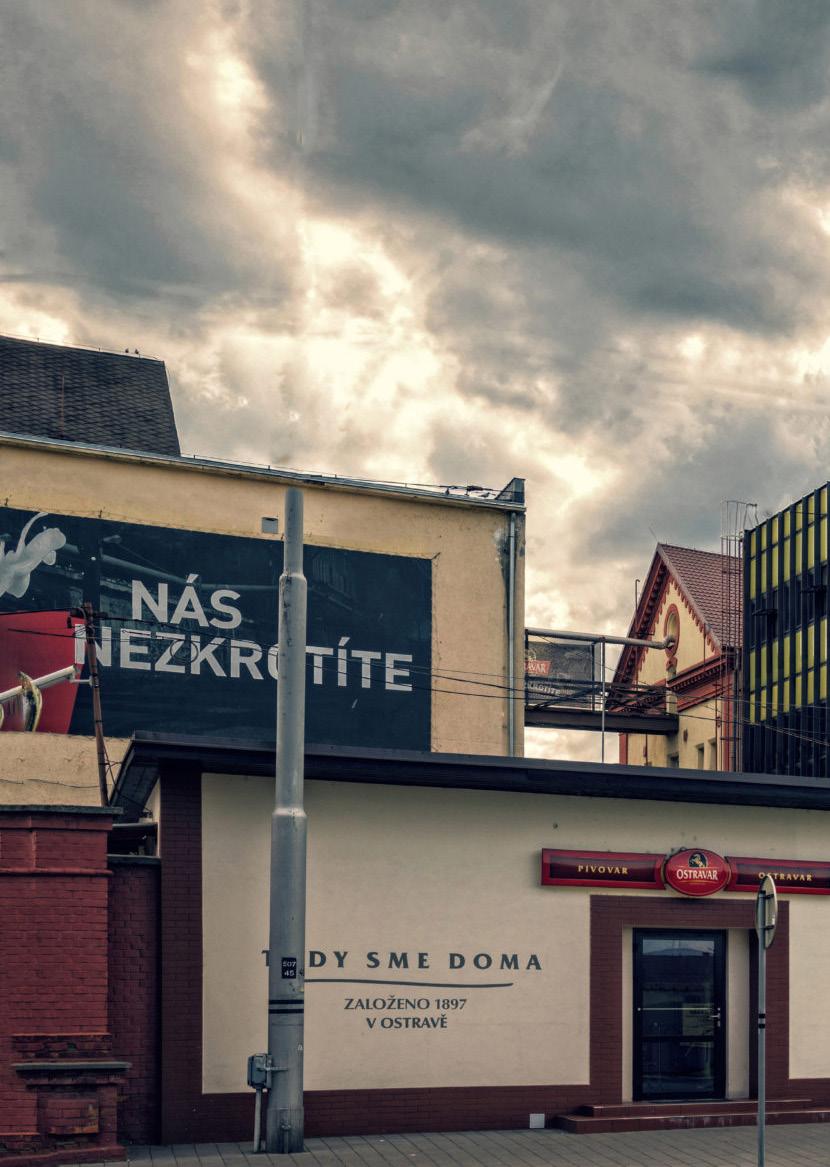
Pivovary Staropramen i Ostravar patří k významným zaměst navatelům, výrobcům a obchodním partnerům ve svých lokali tách. I proto se snaží přispívat k zušlechťování oblastí, ve kterých podnikají. Zaměřují se na sílu kvalitních a dlouhodobých partnerství a jsou nedílnou součástí komunit. Na Smíchově vše započalo v roce 2007 dobrovolnickým projek tem Dny, kdy pomáháme aneb Community Days. Od té doby se veškeré aktivity z oblasti odpovědného podnikání posunuly o několik úrovní výš, a to zejména díky zaměstnancům, kteří se do projektů velmi aktivně zapojují. Velice populární akcí se stal Výčep pod komínem, kdy smíchovský pivovar několikrát ročně otevírá lidem své brány, a to již od roku 2018. Široká veřejnost se u perfektně ošetřeného piva a schází na kus řeči ve svébytné atmosféře pod pivovarským komínem. Pivovar Staropramen také na základě Memoranda spolupracuje přímo s vedením
městské části a participuje na řadě společenských a kultur ních akcí. V neposlední řadě je partnerem několika neziskových organizací a dnes je pojí mnohaleté partnerství. Jedním z nich je například Helppes, centrum výcviku asistenčních psů. Ani pivovar Ostravar nezůstává v podobných aktivitách pozadu. Vedle dlouholeté spolupráce s městskou částí vznikla v době pandemie komunitní iniciativa Nápady z OstraVy. Tou se pivovar snaží podporovat zajímavé nápady, které se snaží stát součástí kulturního dění v regionu a podporovat lokální produkty či projekty. Pivovar se také občas stává centrem kultur ního dění, když se zde pořádají různé koncerty a akce. Letos to byl například Den Mustanga, který navázal na tradiční slav nosti pivovaru. Zcela novou spoluprací, kterou v letošním roce Ostravar navázal, je partnerství s Albrechtovou střední školou v Českém Těšíně. Tam vychovávají a vzdělávají nové generace sladovníků a pivovarníků. Díky této spolupráci se bude moci Ostravar zasadit o předávání tradičních postupů, vědomostí a důležitých řemeslných principů, a zajistit tak budoucnost pivo varského řemesla.
Kromě tradičních partnerství se Pivovary Staropramen snaží reagovat na aktuální situaci a nenadálé události. V letošním roce například společnost podpořila obyvatele zasažené válkou na Ukrajině. Vedle sbírky přes Člověka v tísni, do které věno vala 2 miliony korun, byla od prvního dne v přímém kontaktu s kolegy pocházejícími z Ukrajiny a nabízela jim potřebnou pomoc. Zaměstnanci také zorganizovali několik akcí, jejichž výtěžek putoval do interního fondu určeného na podporu zmíněných kolegů a jejich blízkých. Podobně reagovala i v předešlém roce, kdy se jihem Moravy nečekaně prohnalo tornádo. Za tuto podporu si vysloužila ocenění z rukou prezi denta Českého červeného kříže.
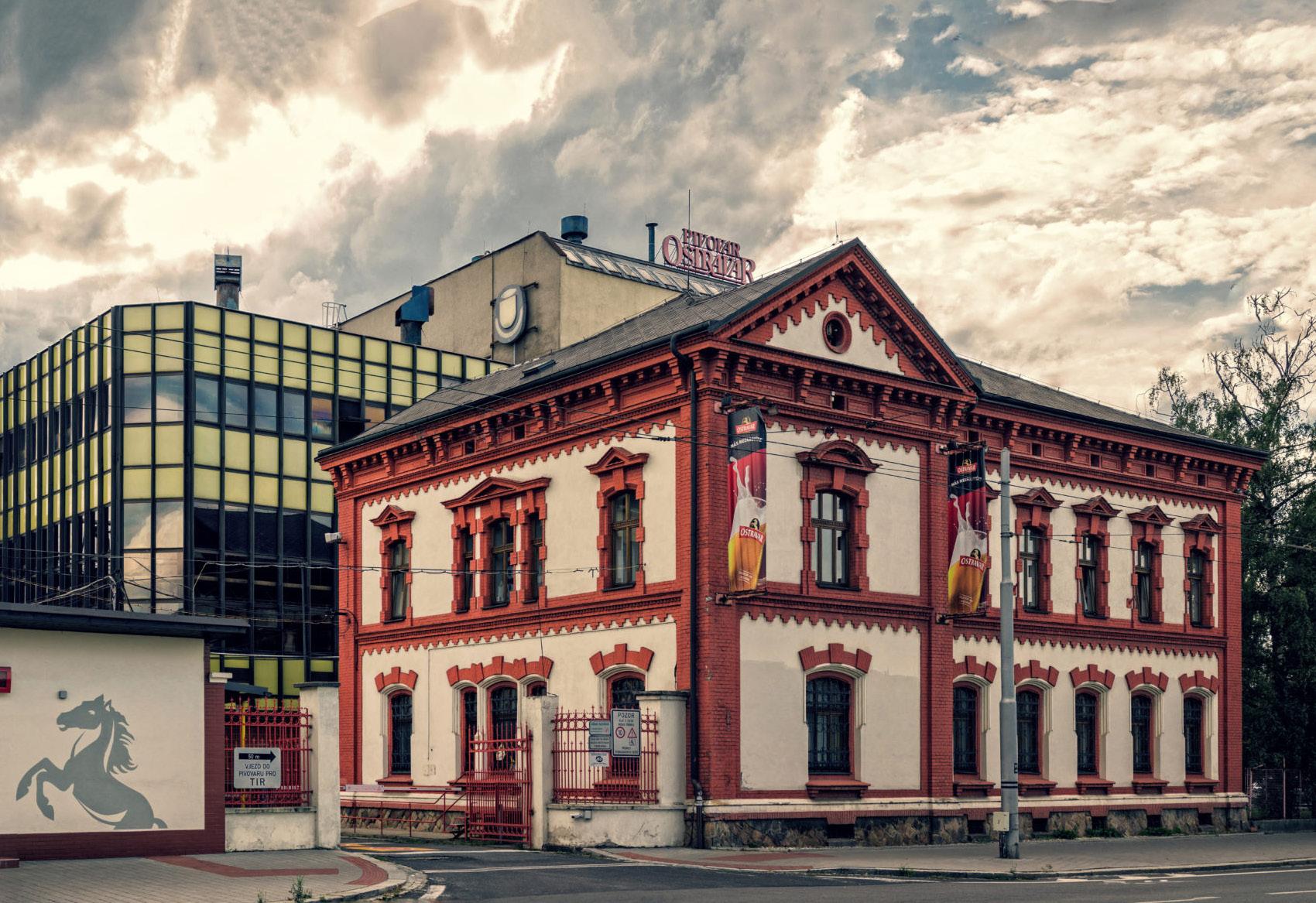
BEER IS AN INSEPARABLE PART OF THE CZECH NATION AND HAS ACHIEVED A WORLDWIDE REPUTATION. THE CZECHS TAKE GREAT CARE OF THEIR NATIONAL JEWEL, HONOURING TRADITIONS AND THE BREWING CRAFT OF WHICH THEY ARE DULY PROUD. PIVOVARY STAROPRAMEN, THE SECOND LARGEST BREWING COMPANY ON THE CZECH MARKET, BREWS BEER IN TWO BREWERIES LOCATED IN THE CENTRE OF MAJOR CITIES. THEREFORE, IT IS IMPORTANT FOR THEM TO CONNECT WITH LOCAL COMMUNITIES AND OTHER ACTIVITIES THAT MAKE THEM NOT ONLY POPULAR AND HIGHQUALITY, BUT ALSO RESPONSIBLE BREWERIES.
The Staropramen brewery was founded in Prague’s Smíchov district more than 150 years ago. A lot has changed in that time, but one thing remains the same at Staropramen. It is the love for quality beer, craft and tradition. This, of course, does not prevent the brewery from developing further. In addition to traditional brands such as Staropramen Granat or the interna tionally renowned Staropramen lager, a number of new beers or beer categories are being created. For example, 11 years ago, a completely new category of beer mixes was created and since then the Cool brand has been one of the most sought-af ter on the market.
At the other end of the Czech Republic, in the third largest city, the Ostravar brewery, which is also part of Pivovary Staropra men, is celebrating its 125th anniversary this year. The beer still ferments in open vessels in the centre of Ostrava, giving it an unmistakable taste that most consumers love. In addition to the traditional portfolio, the brewery also focuses on special limited editions under the name Speciály ze spilky. In addition, this year Ostravar has decided to go beyond the borders of its region and has started nationwide distribution. Beer brands from both breweries regularly score points in Czech and international professional competitions.
Both Staropramen and Ostravar are major employers, produ cers and business partners in their localities. That is why they strive to contribute to the improvement of the areas in which they operate.
They focus on the strength of quality and long-term partner ships and are an integral part of their communities. In Smichov, it all started in 2007 with the volunteer project Days of Helping or Community Days. Since then, all responsible busi ness activities have moved up several levels, thanks in parti cular to the employees who are very actively involved in the projects. A very popular event since 2018 has been the Tavern Under the Chimney, when the Smíchov brewery opens its doors to the public several times a year. The general public enjoys a perfectly treated beer and a chat in a unique atmosphere under the brewery chimney. The Staropramen brewery also coopera tes directly with the city district management on the basis of a
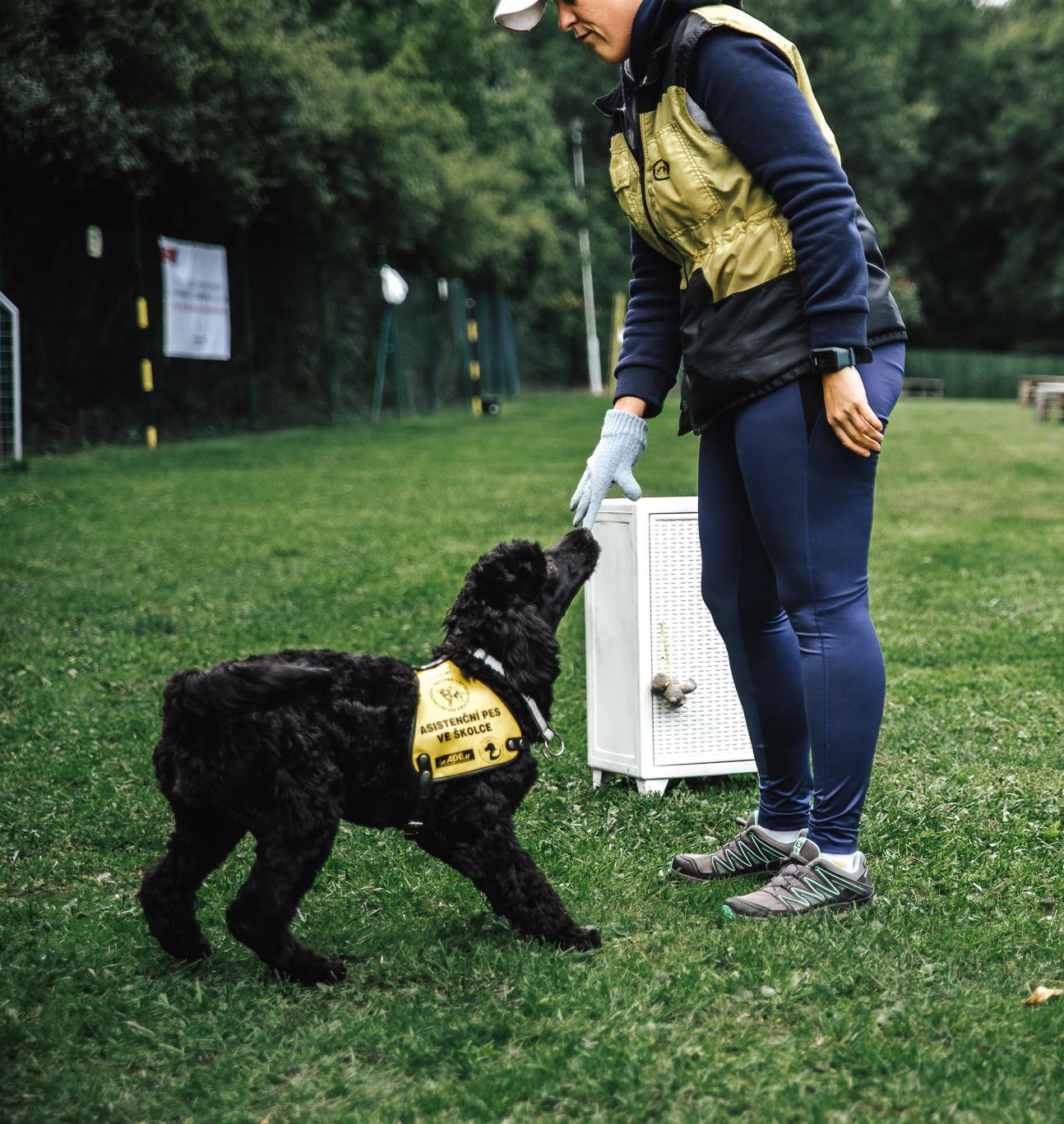
Memorandum and participates in a number of social and cultu ral events. Last but not least, it is a partner of several non-pro fit organizations and today they are linked by a partnership of many years. One of them is Helppes, an assistance dog training centre.
The Ostravar brewery is not lagging behind in similar activities. In addition to the long-standing cooperation with the city district, a community initiative called Nápady z Ostravy was established during the pandemic. With this initiative, the brewery is trying to support interesting ideas that are trying to become part of the cultural events in the region and support local products or projects. The brewery also occasionally becomes the centre of cultural events when it hosts concerts and events. This year, for example, it was Mustang Day, which followed the brewery’s traditional festivities.
A completely new cooperation that Ostravar has established this year is a partnership with Albrecht High School in Český Těšín. There, they educate and train new generations of malts ters and brewers. Thanks to this cooperation, Ostravar will
be able to promote the transmission of traditional practices, knowledge and important craft principles, thus ensuring the future of the brewing craft.
In addition to traditional partnerships, Pivovary Staropramen tries to respond to the current situation and unexpected events. This year, for example, the company supported people affec ted by the war in Ukraine. In addition to the collection through People in Need, to which it donated CZK 2 million, it was in direct contact with colleagues from Ukraine from day one, offe ring them the help they needed. The staff also organised seve ral events, the proceeds of which went to an internal fund to support the colleagues and their relatives. The previous year, when a tornado unexpectedly swept through southern Mora via, the company had a similar response. This support earned her an award from the President of the Czech Red Cross.
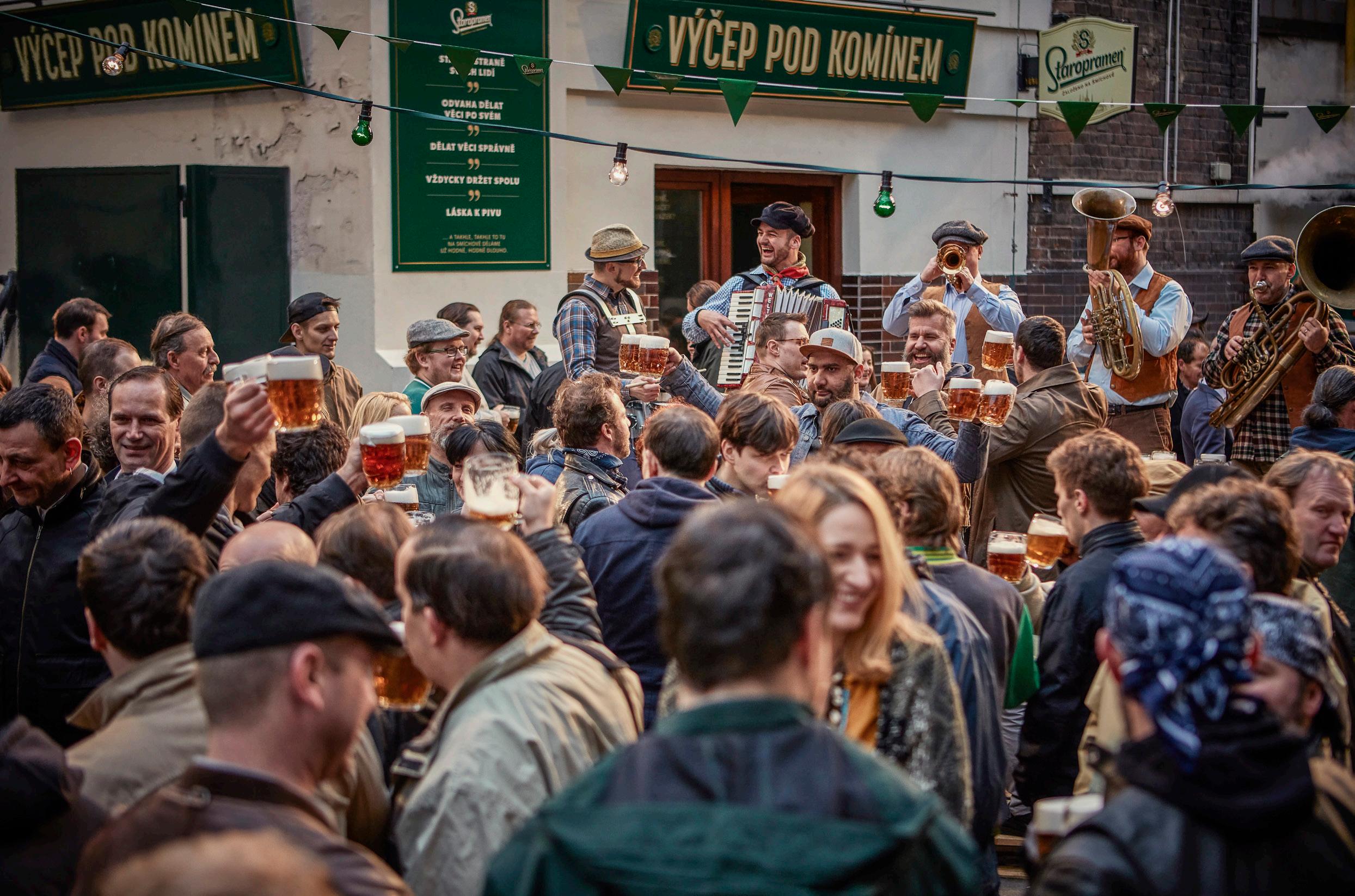
The EBC standard malt is a hale malted barley providing actual assistance to around 150 maltsters, brewers or independant/sector laboratories of the world. It can be used for checking the results of test methods described in Analytica-EBC or for calibration of apparatus (e.g. Friabilimeter) or other methods (flow injection, near infrared reflectance etc.). The 21st Standard Malt has been accepted after analysis by the Analysis Committee of the European Brewery Convention and now replaces the 20th Standard Malt (issued in 2019).
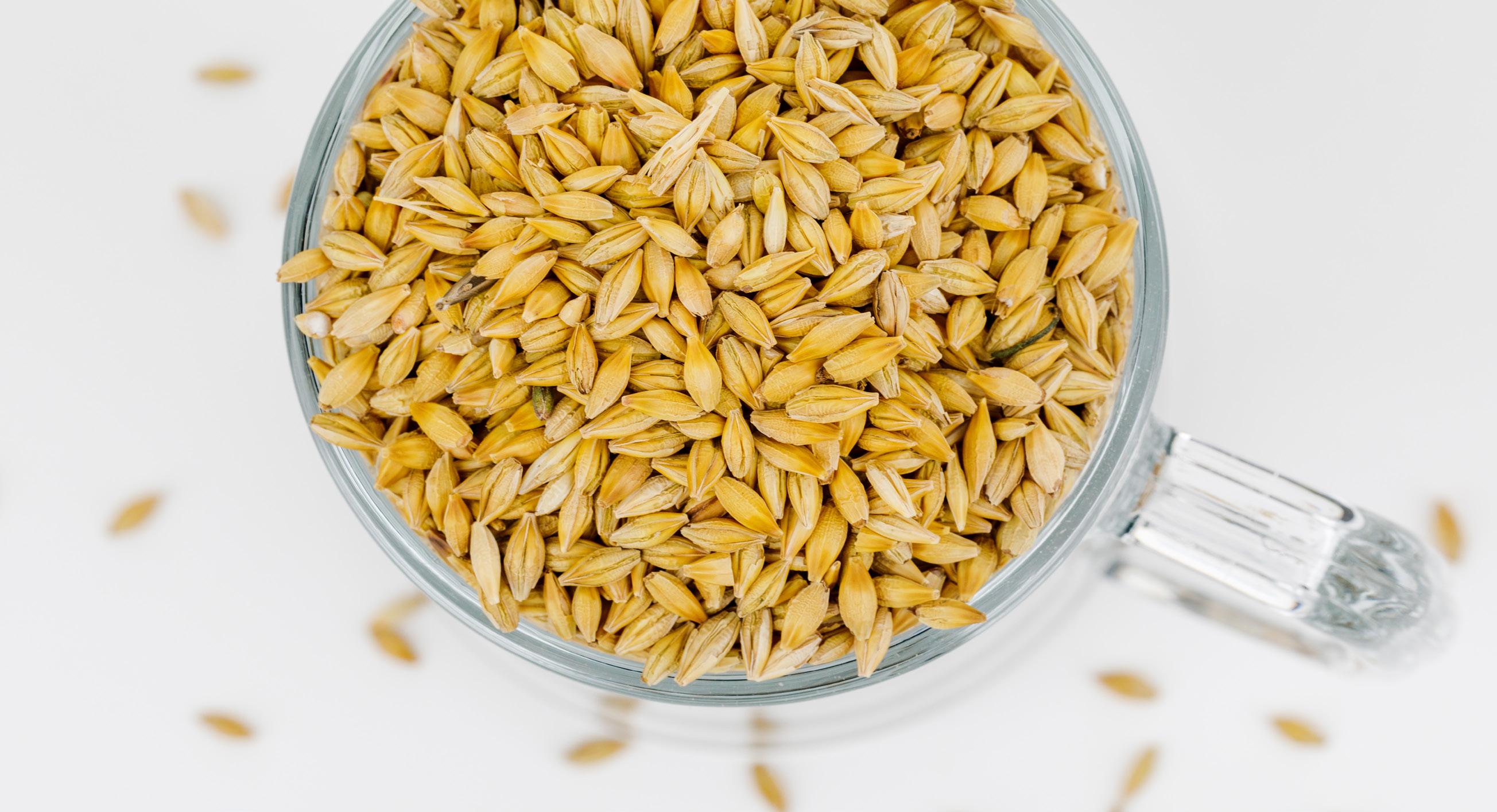
28,00 EUROS (€) EXCLUDING CHARGES.
Order can be placed to IFBM-Qualtech group (VANDOEUVRE LES NANCY, FRANCE)
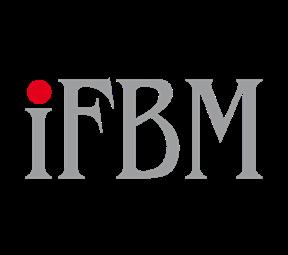
The standard malt is usually shipped to foreign customers within 2 weeks (EU) or within 3 weeks (out of EU) in situation where IFBM is organizing the delivery once an official purchase order has been received*.
* Please note that mean delivery time may be lengthened by specific procedures of customer’s import, customs inspection of goods, by specifics rules set up by transport carrier in periods of COVID-19 or during the summer period in July and August. For this reason, we request to customers to anticipate as far as possible their urgent needs of EBC standard malt.
More information on the 21st EBC Standard Malt and order procedure can be found here:
www.europeanbreweryconvention.eu/ 21st-EBC-Standard-Malt
